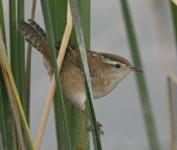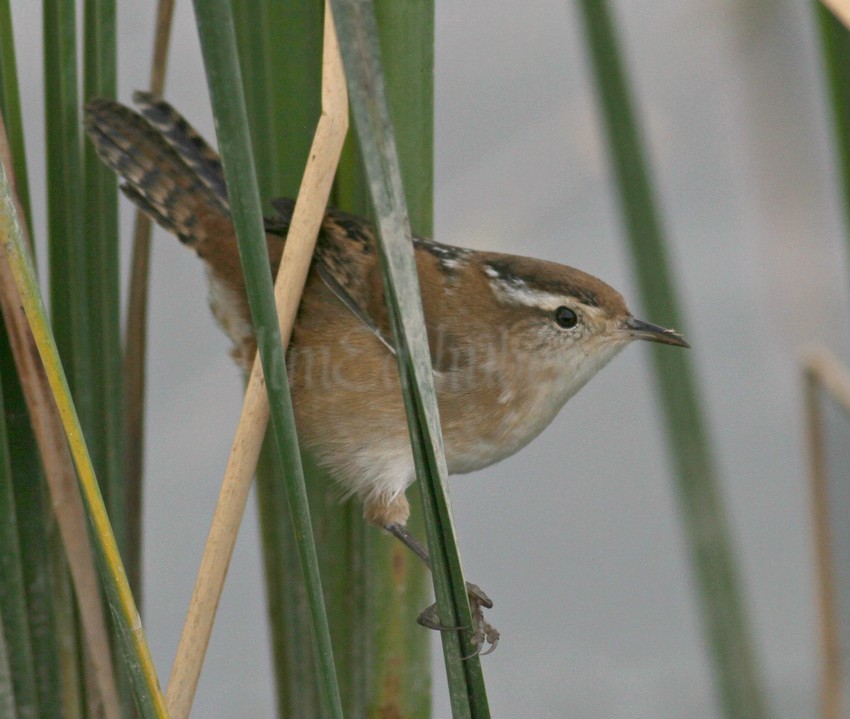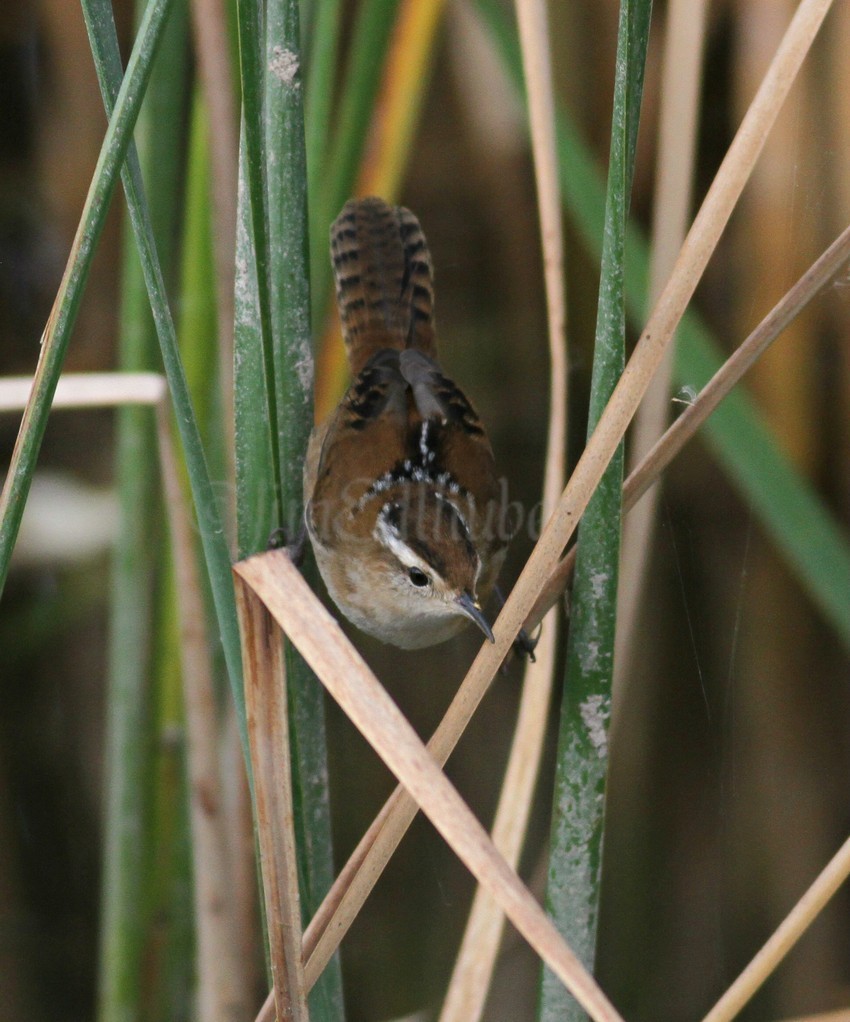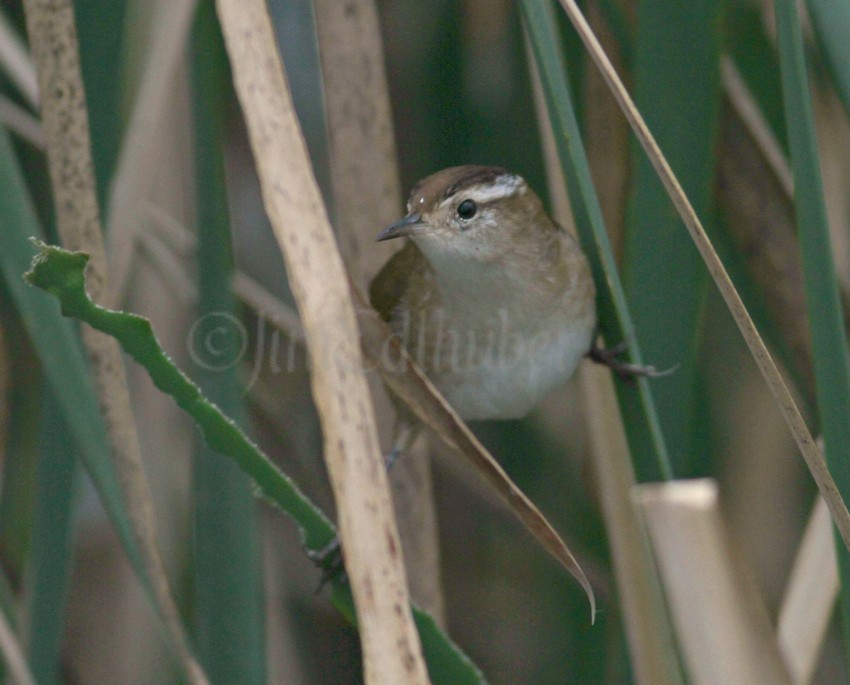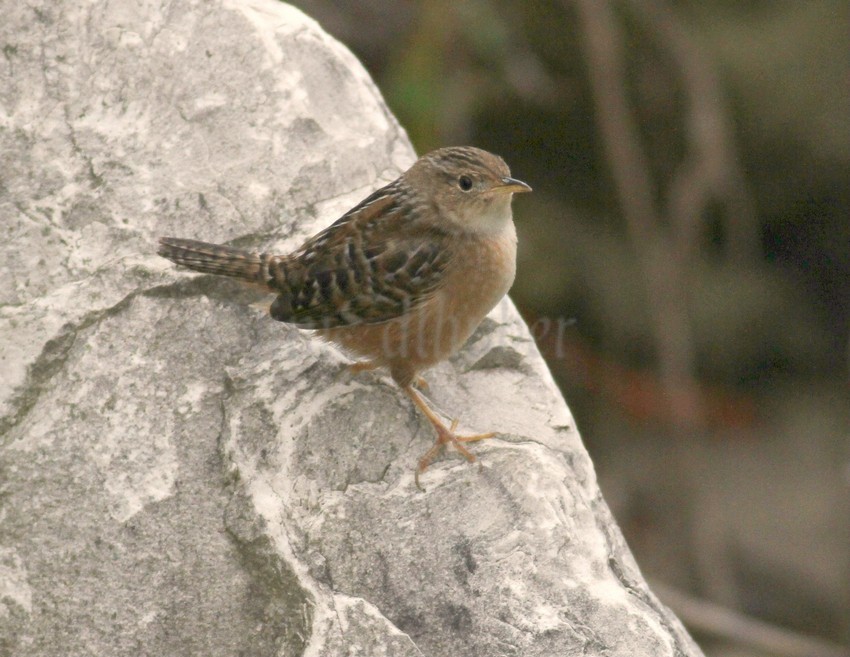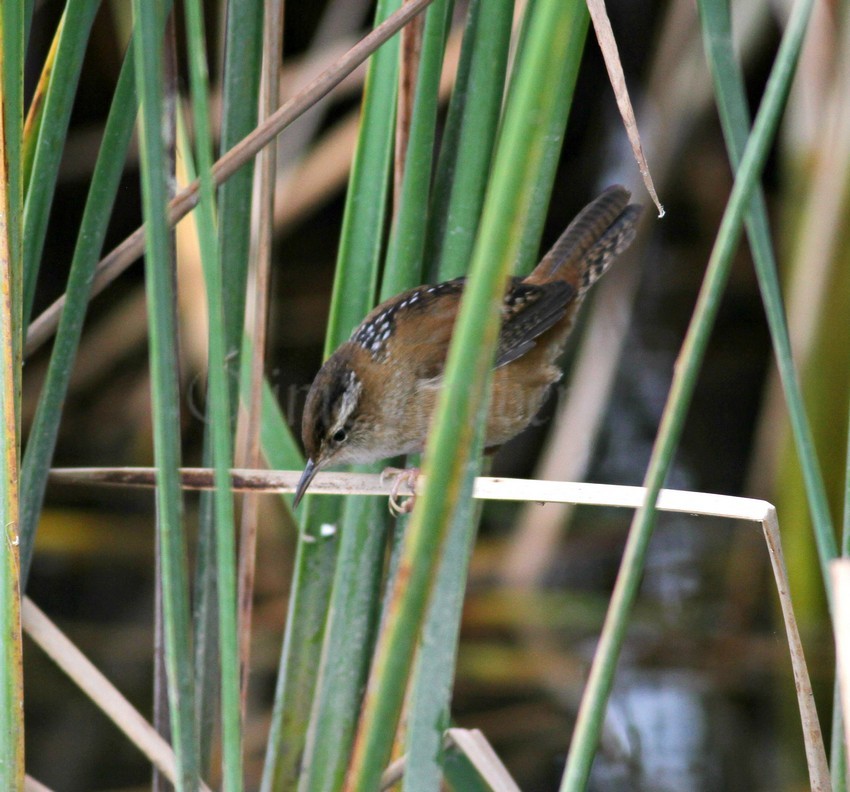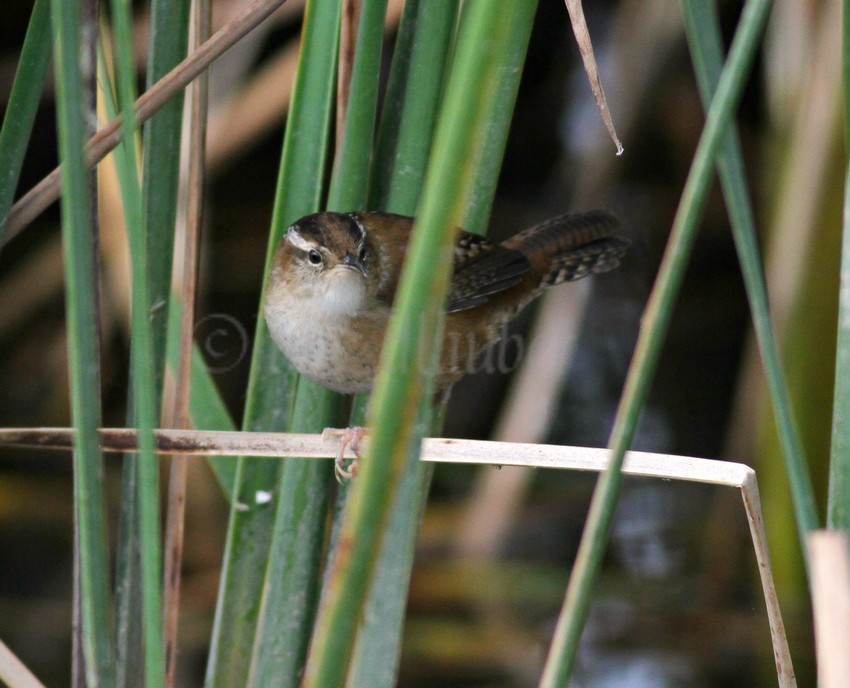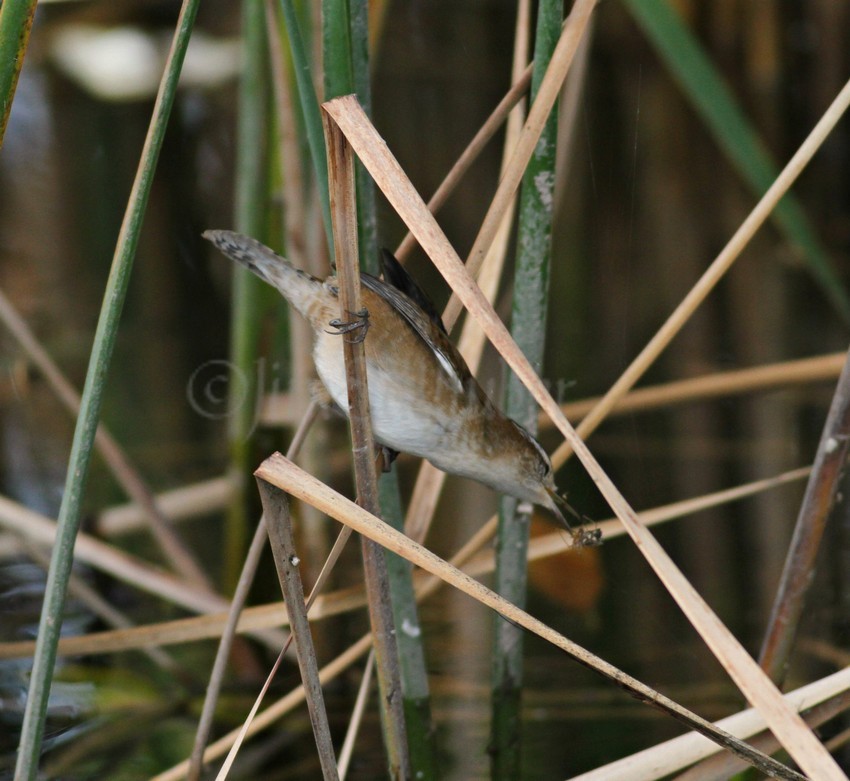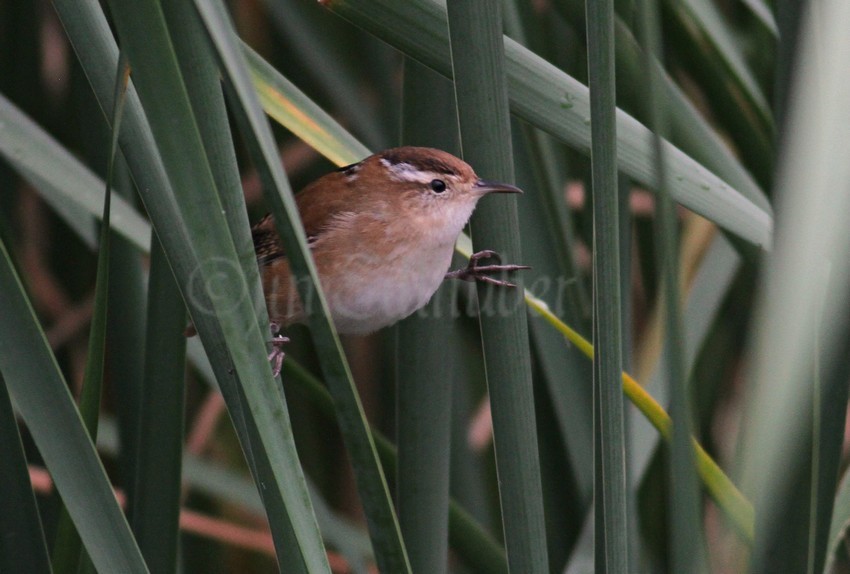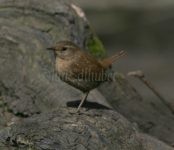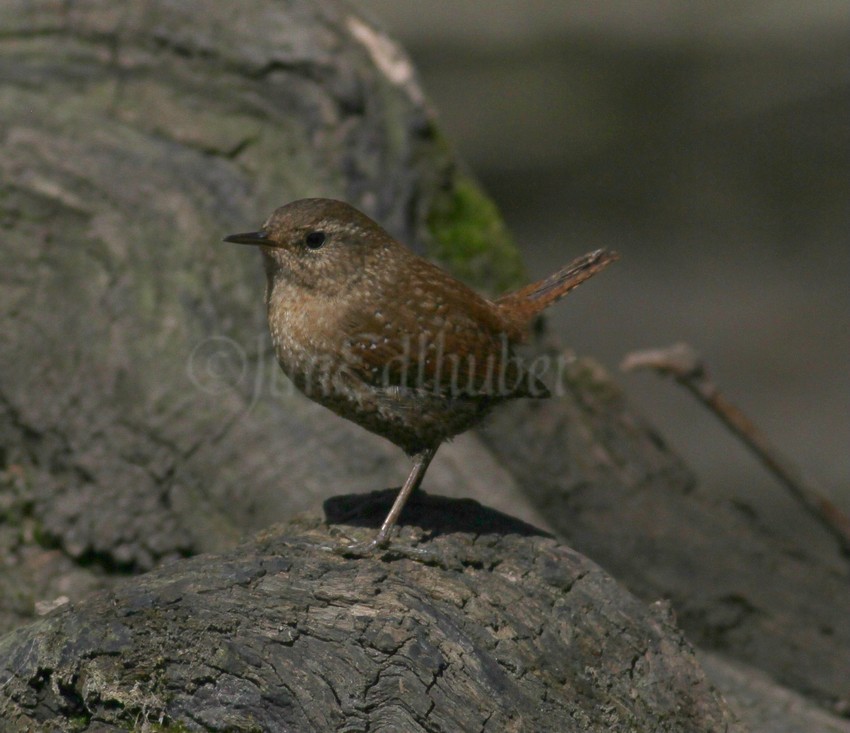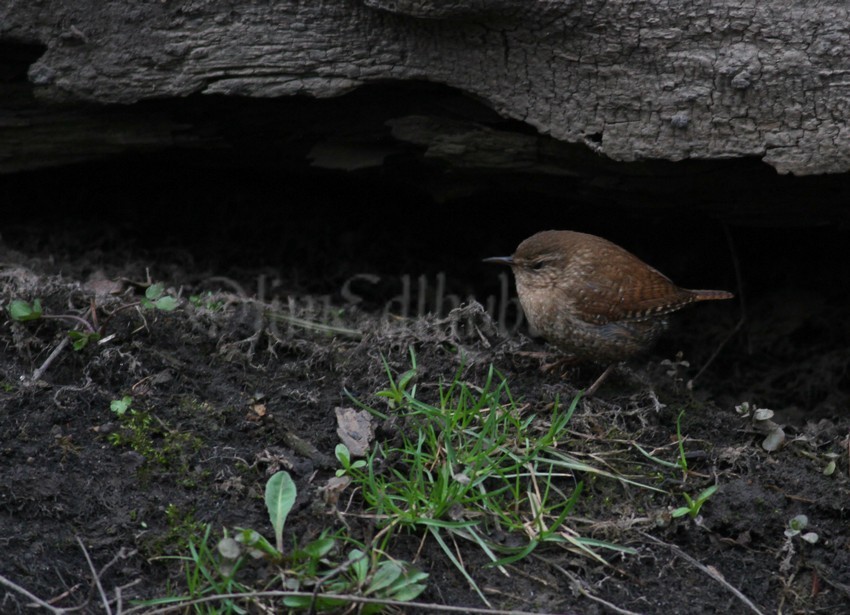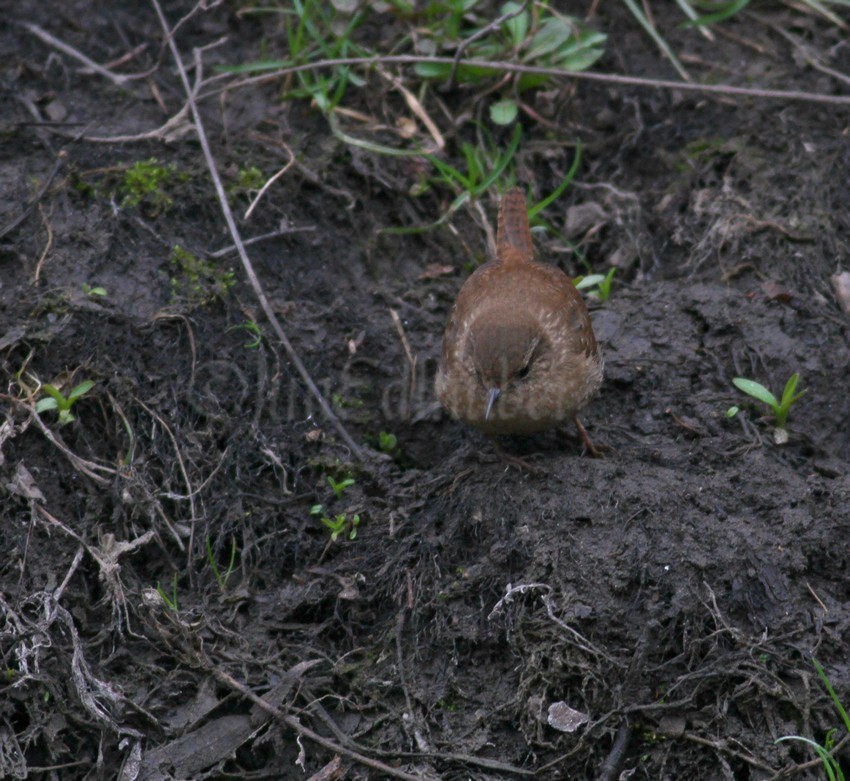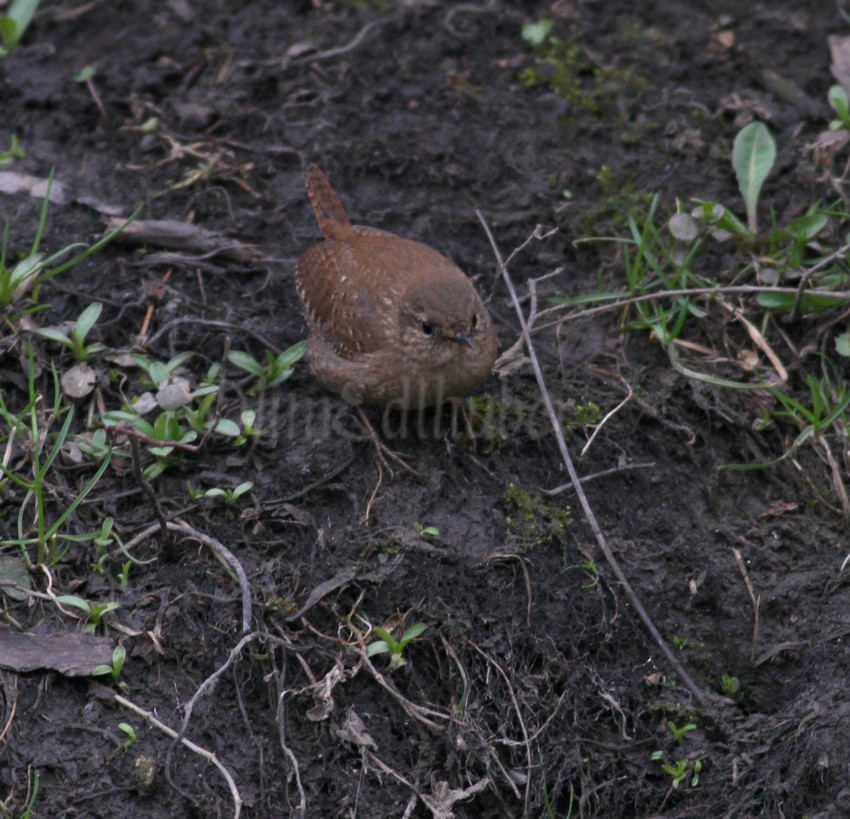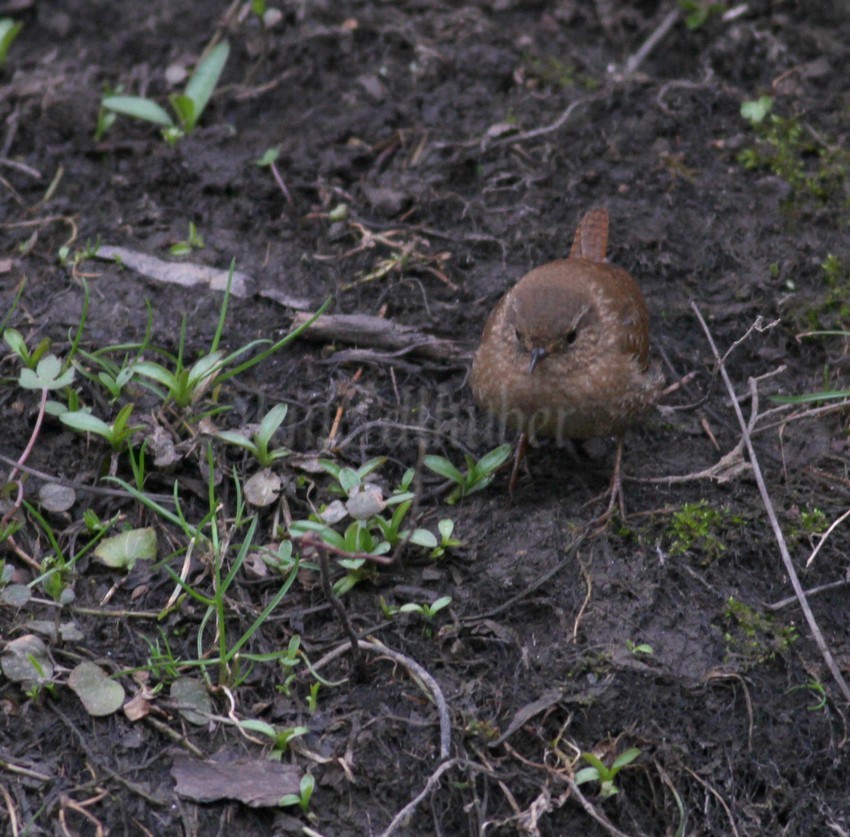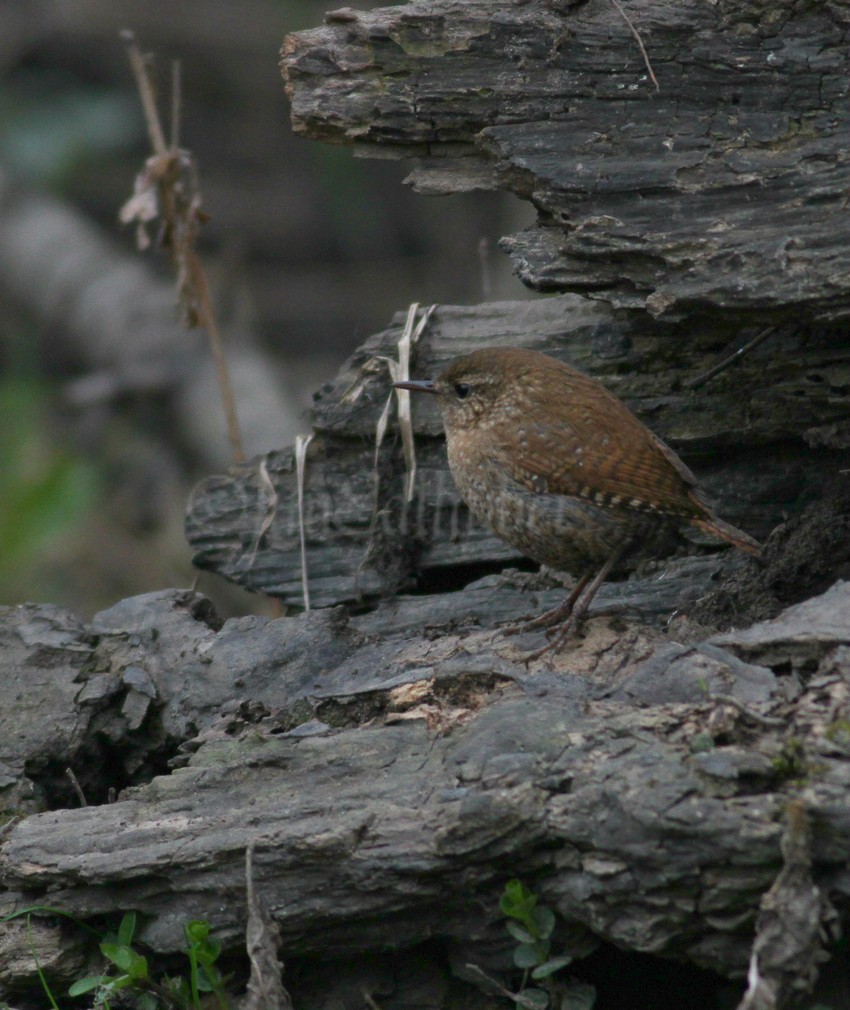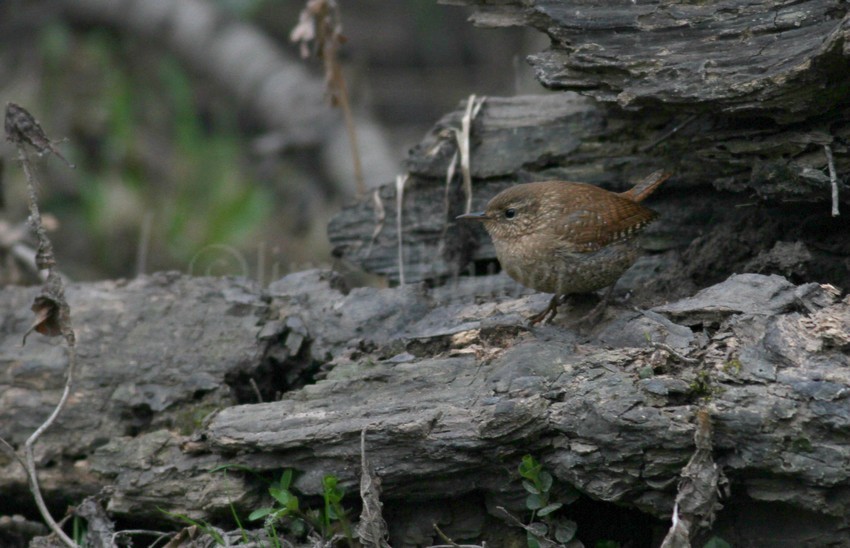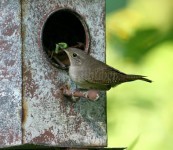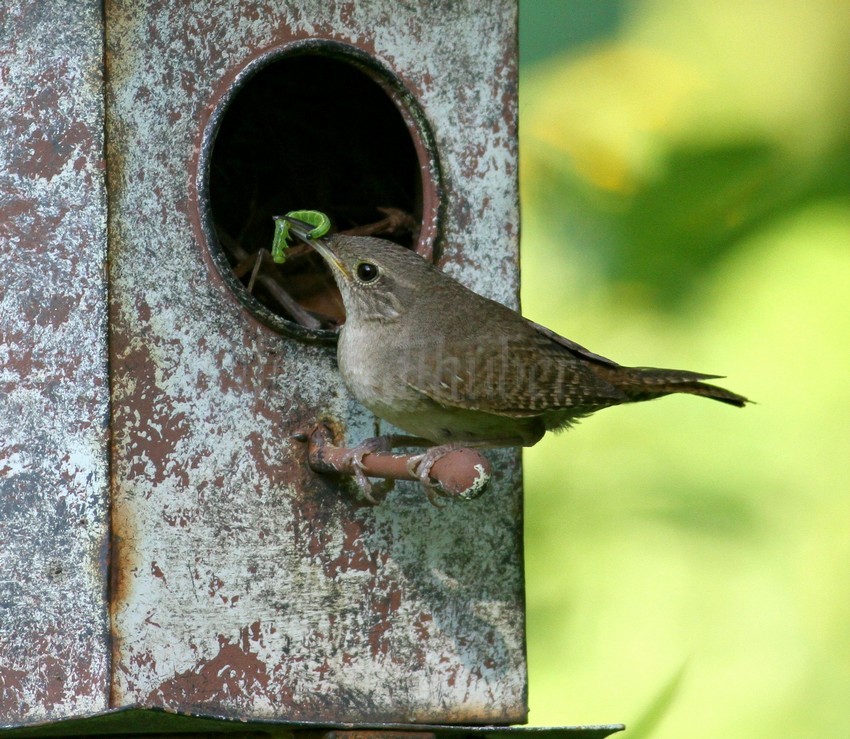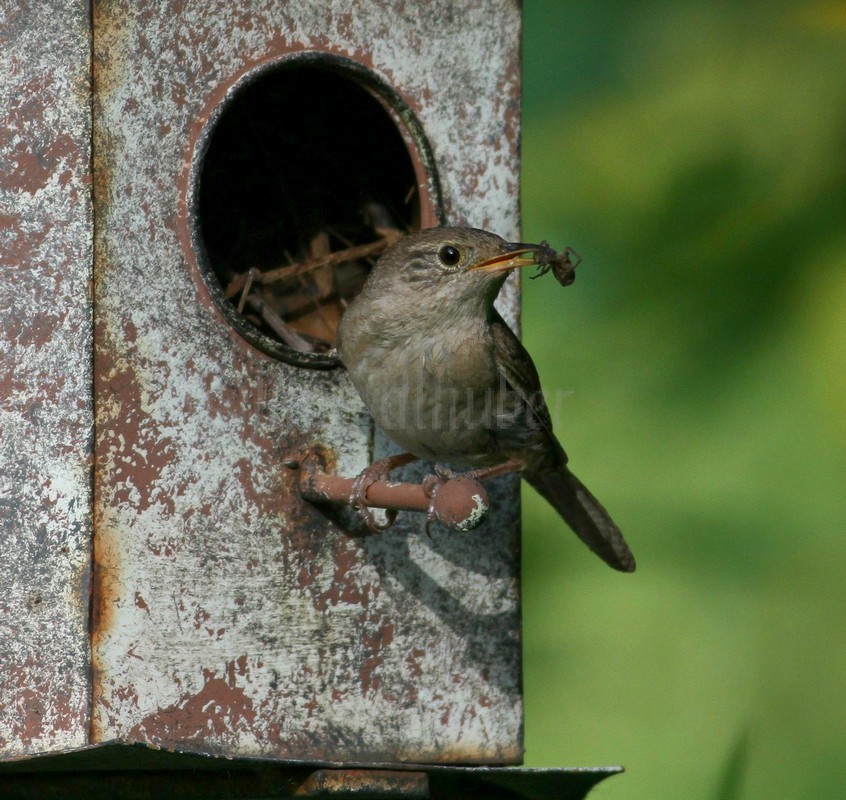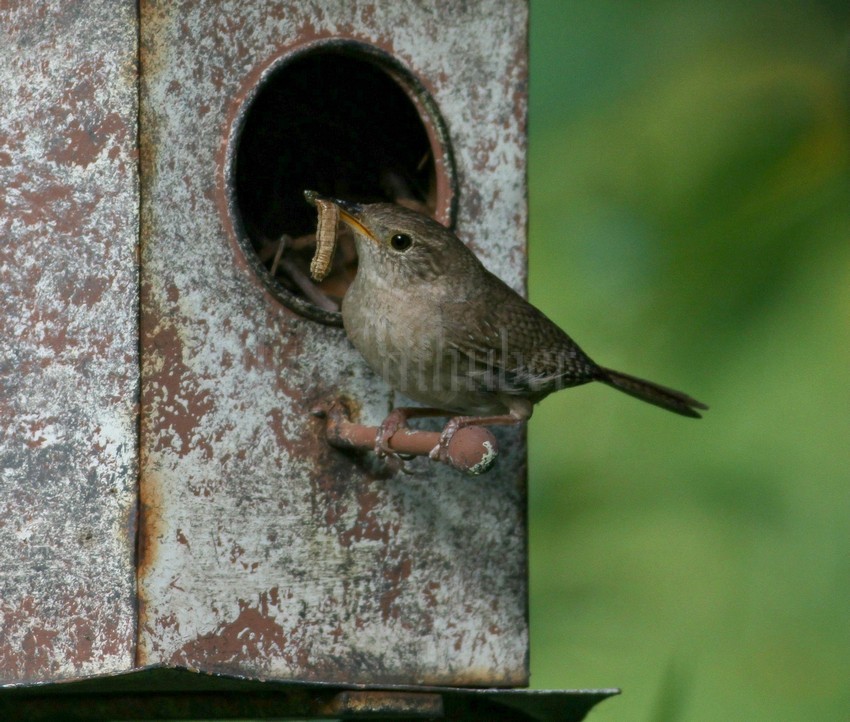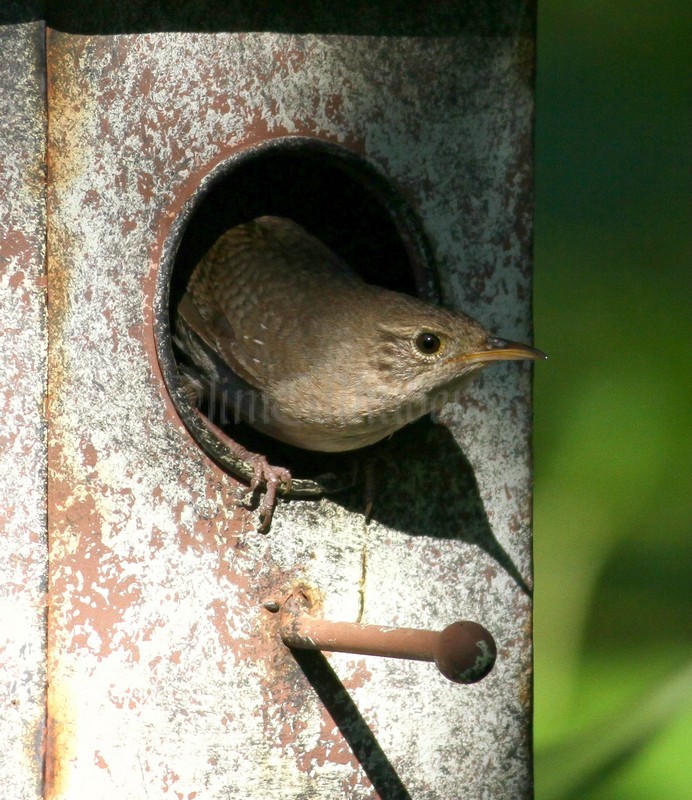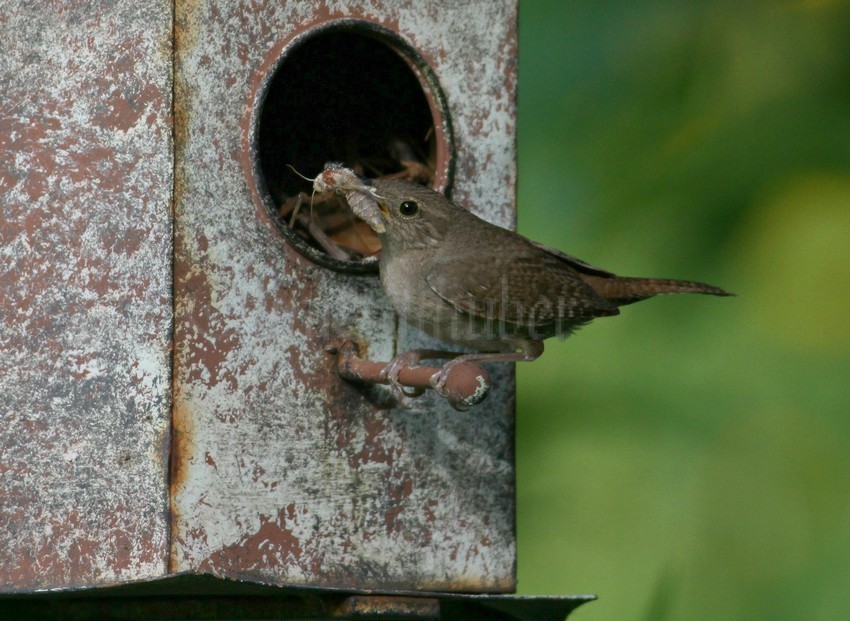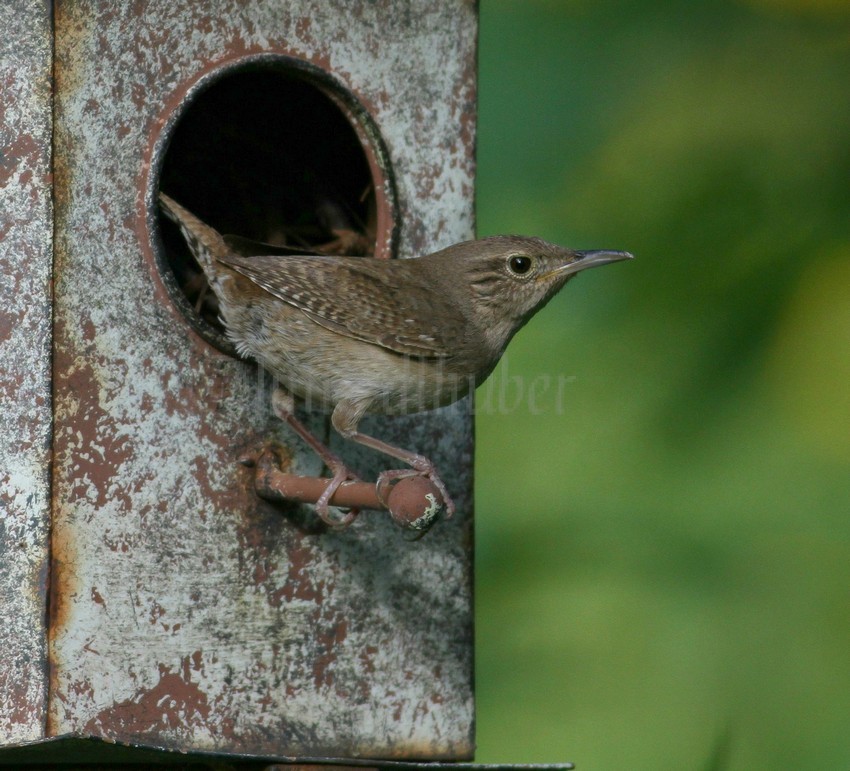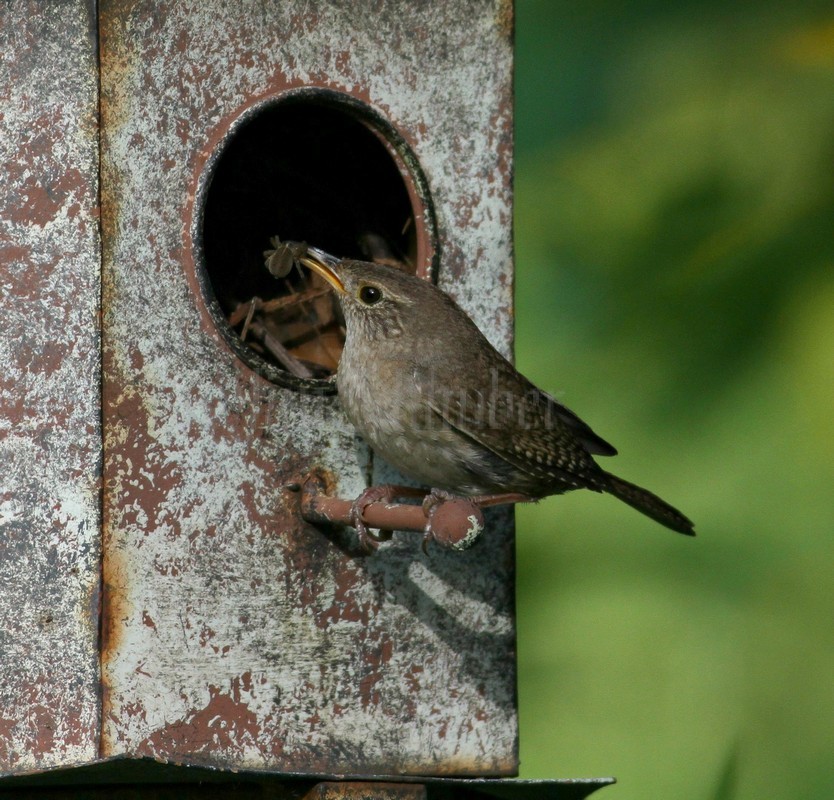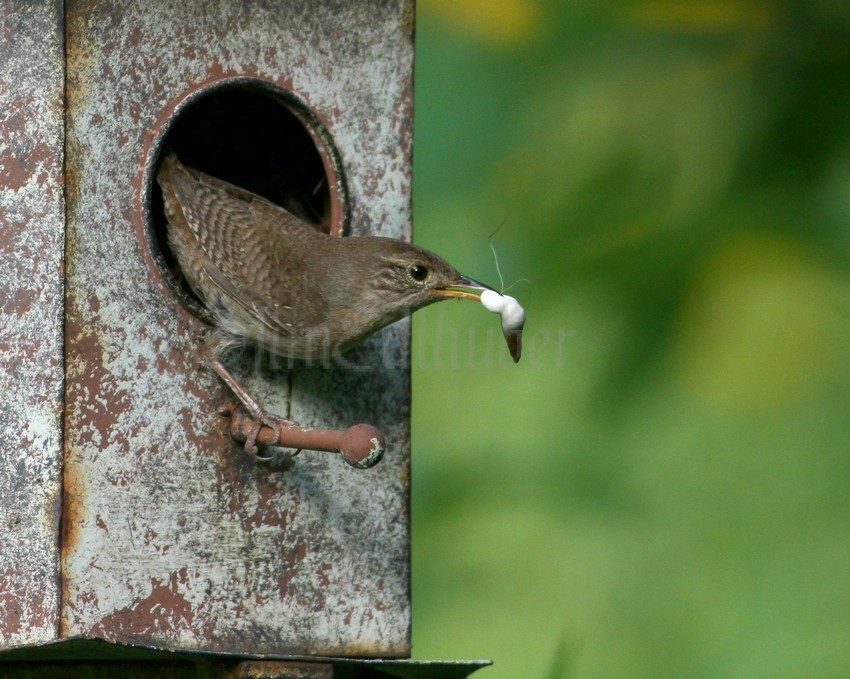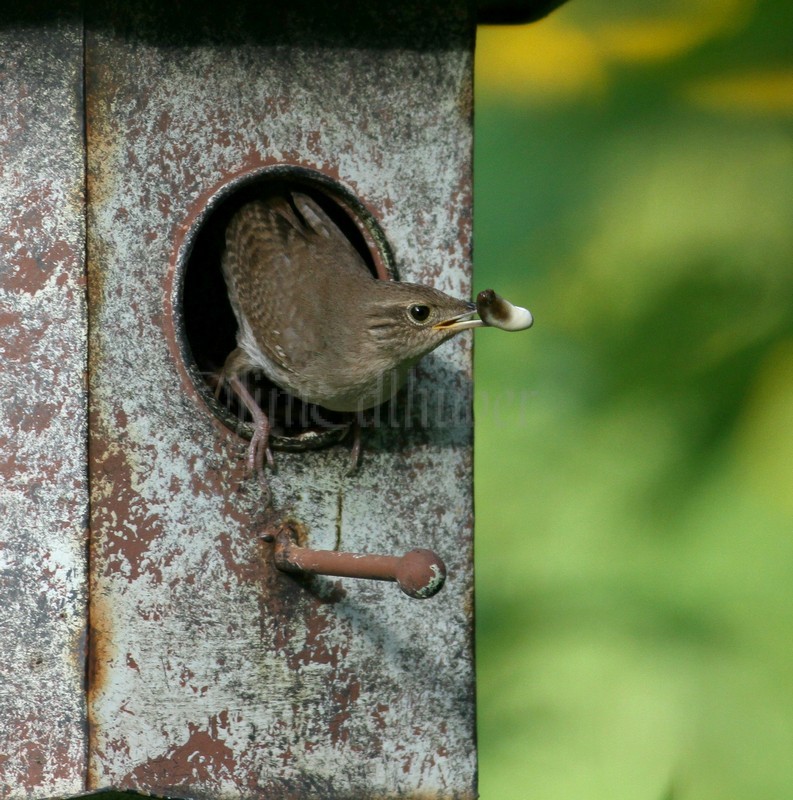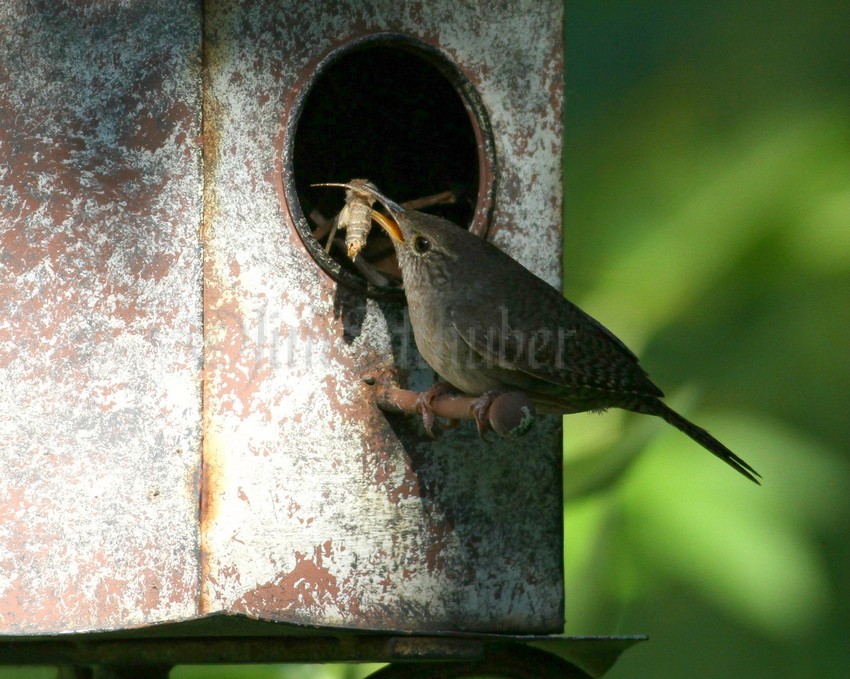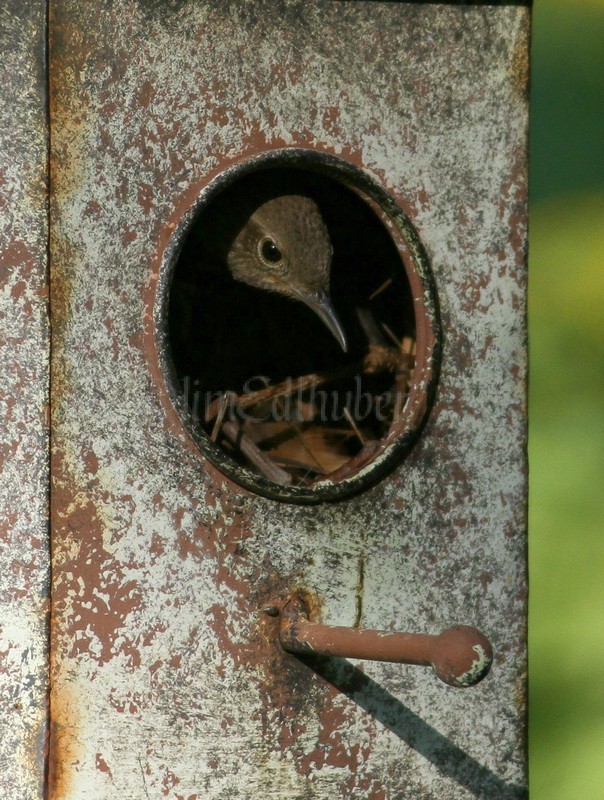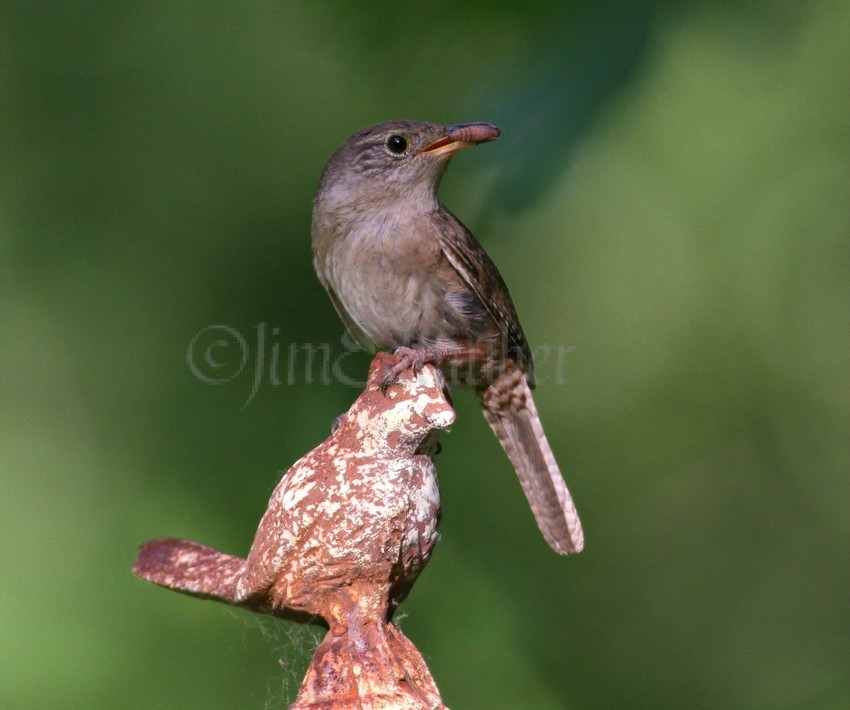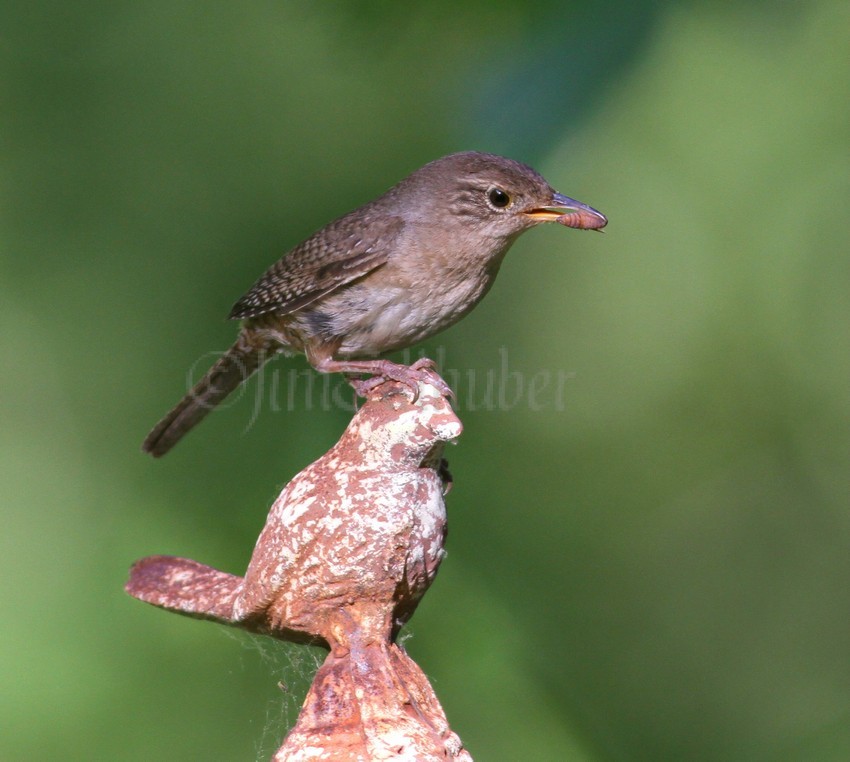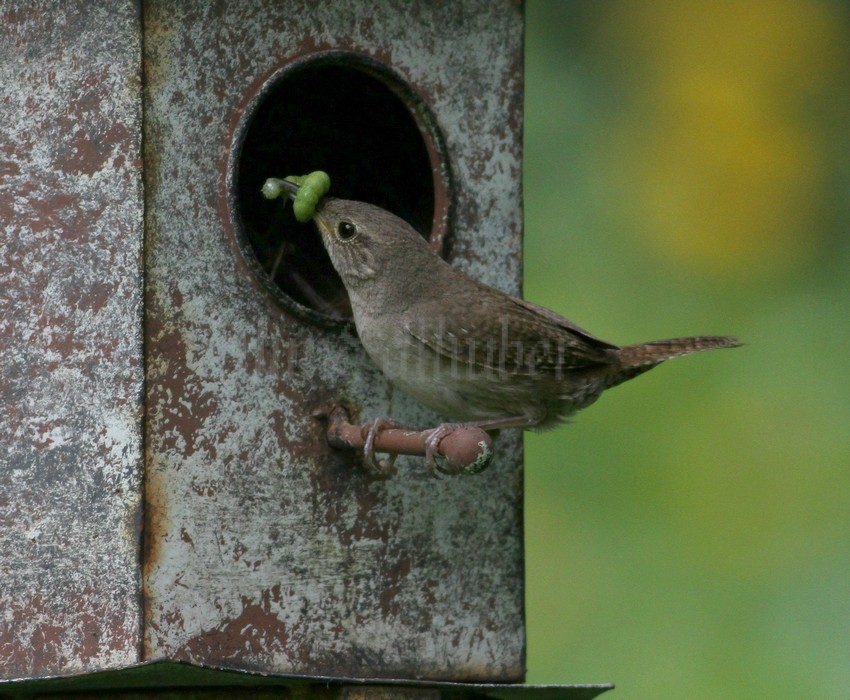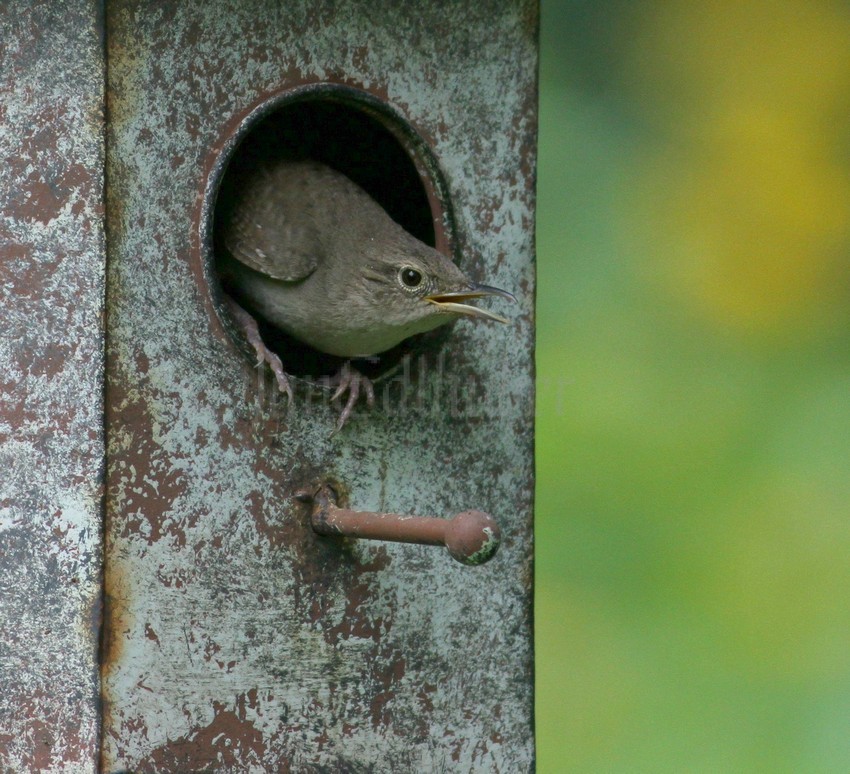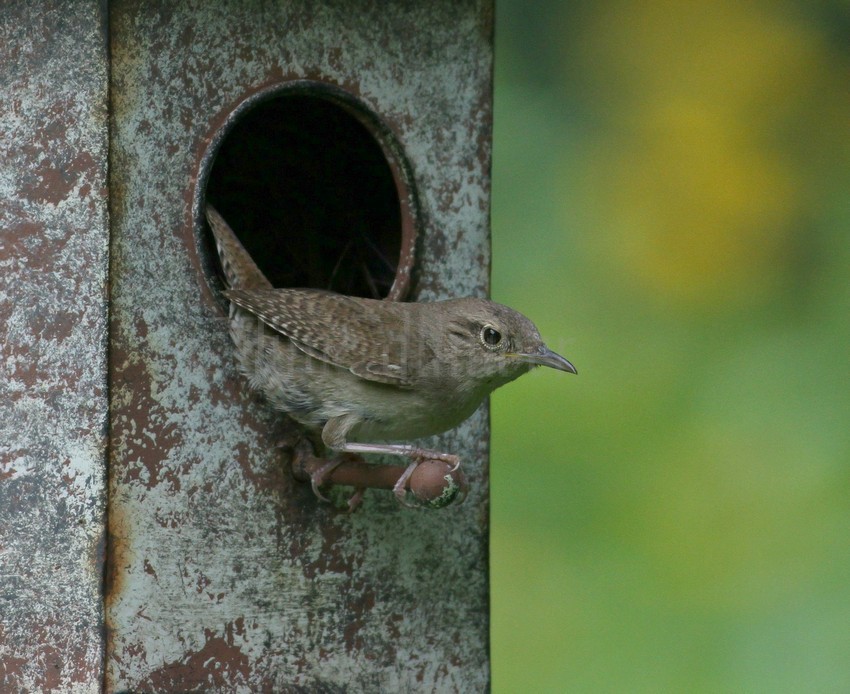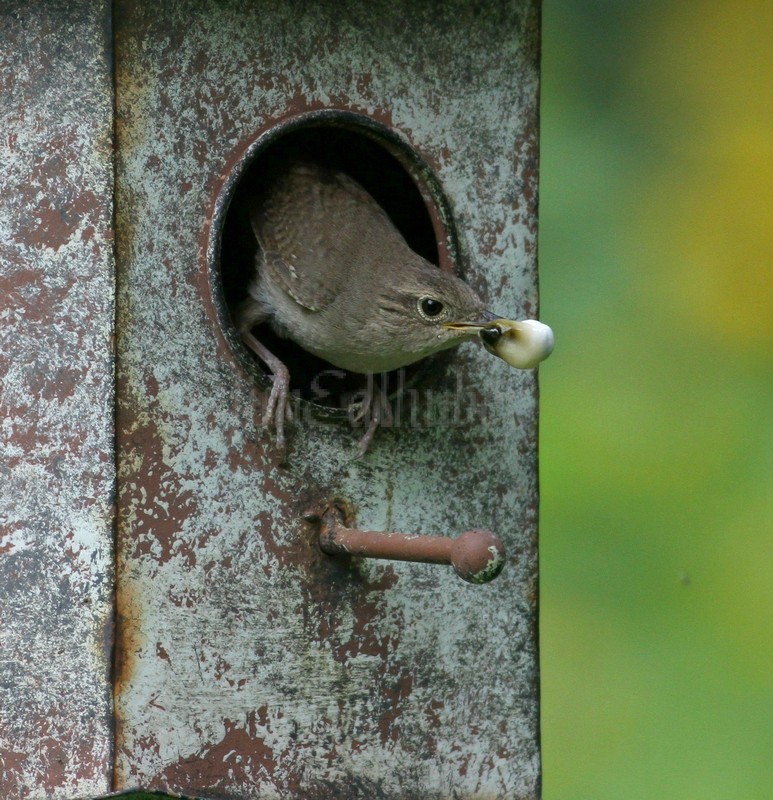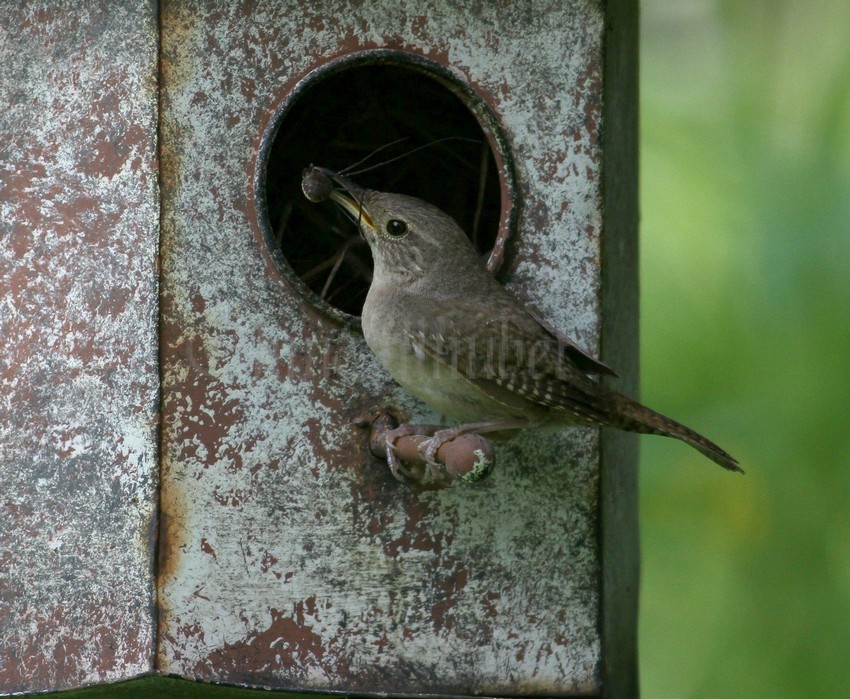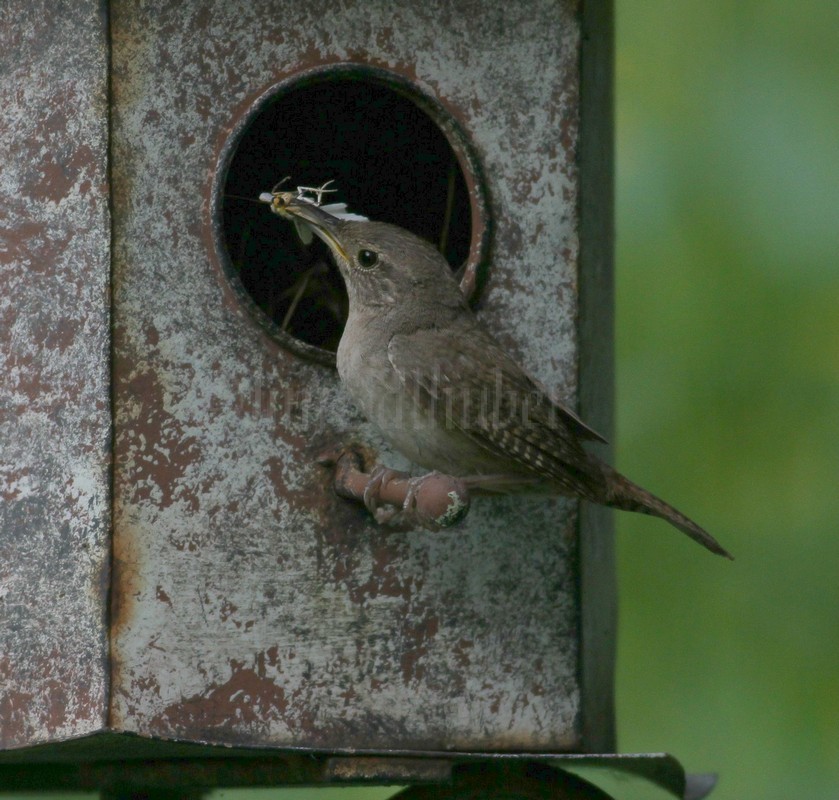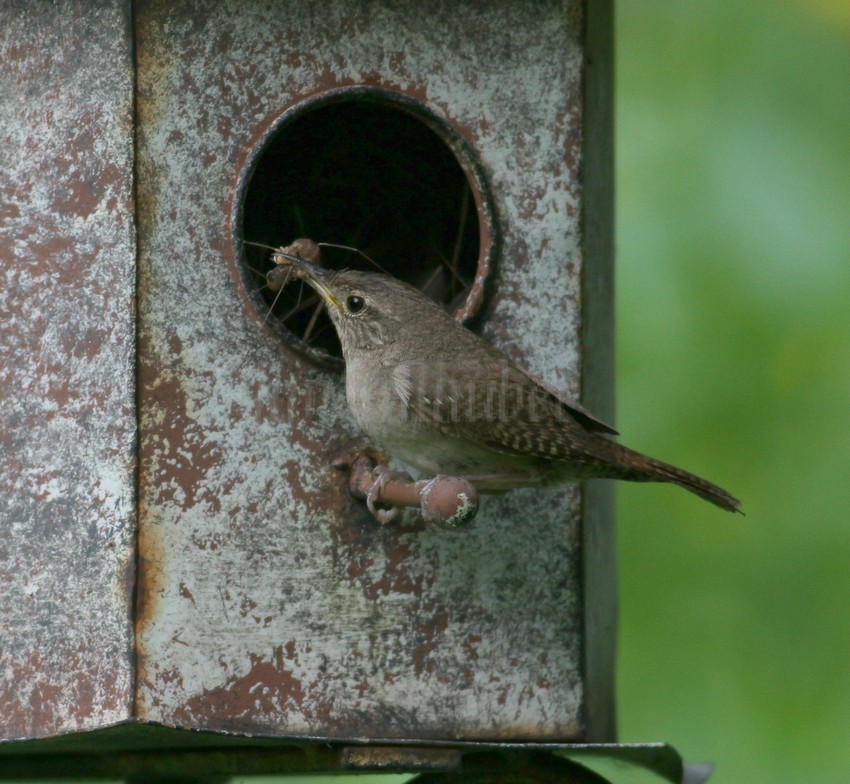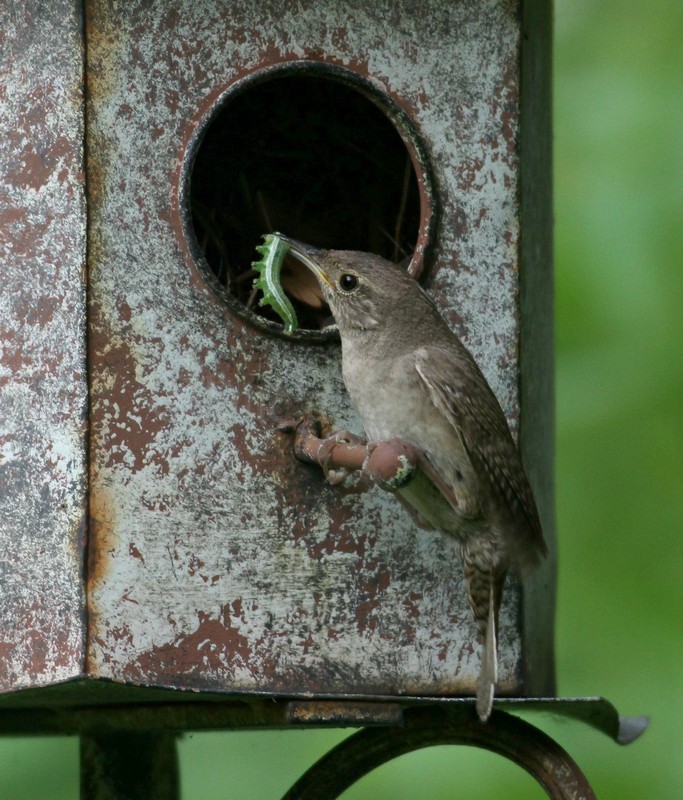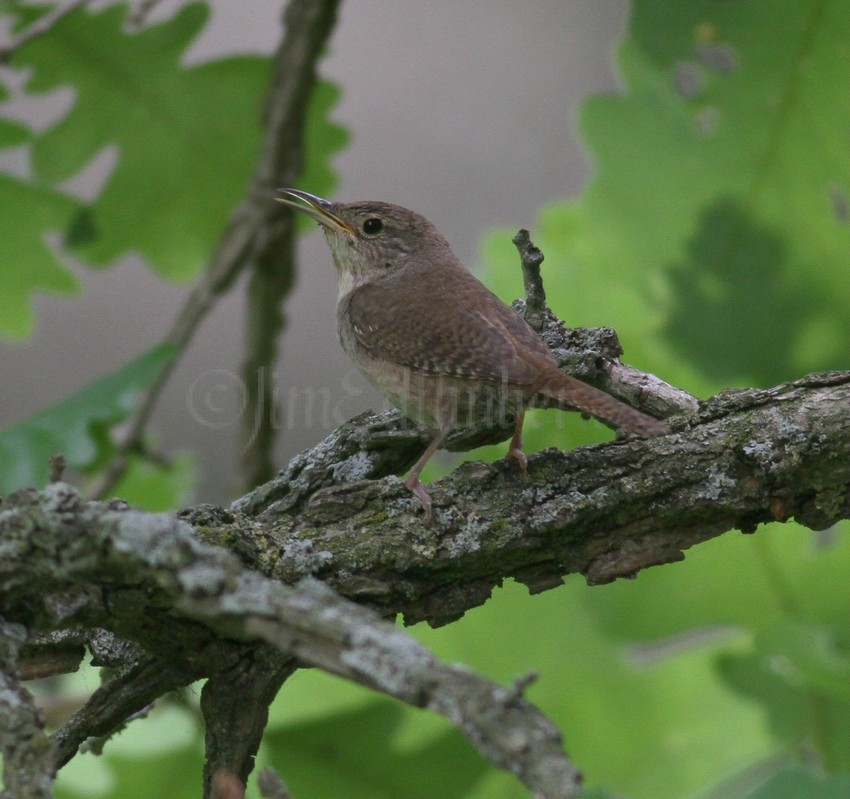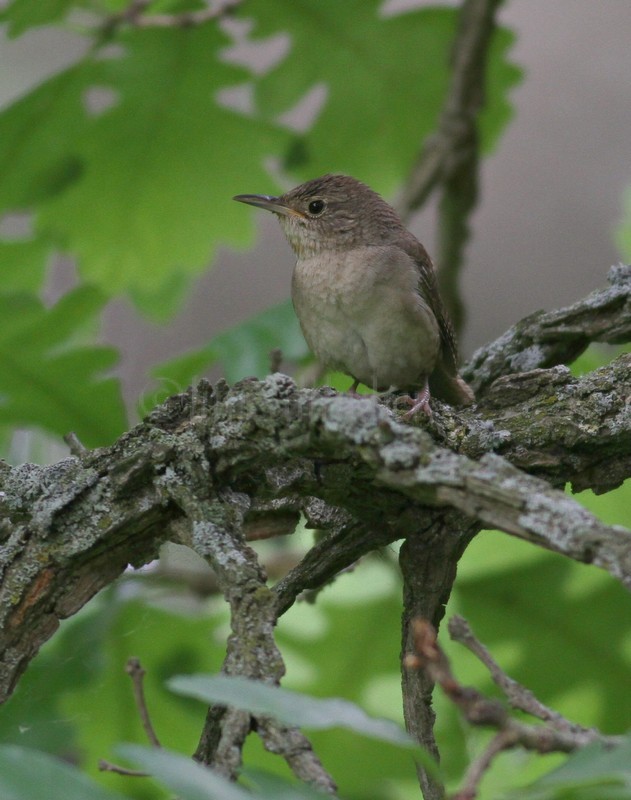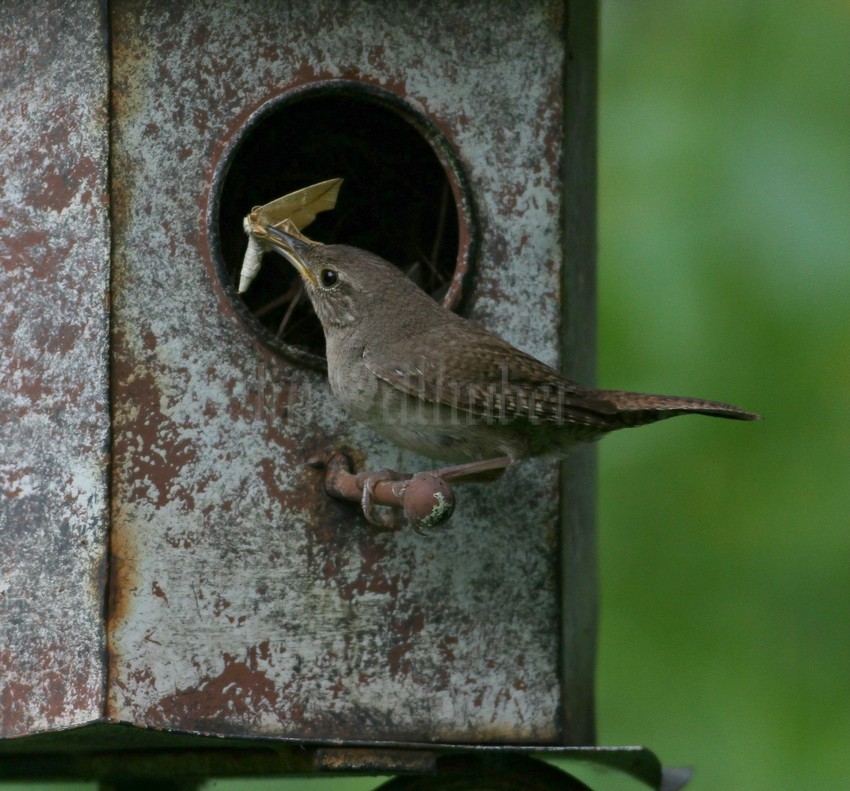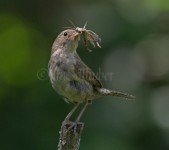
I noticed House Wrens flying back and forth through the yard a couple of days ago and thought I would see what was going on. They were nesting in an older Bluebird house in the yard. Both adults were bringing food to the young in the house. It appeared that a large portion of the food brought in were Daddy Longlegs and amazingly the legs were all moving on them going to or into the house. Earwigs, caterpillars and other insects which are also known to be foods for the House Wrens were also gathered. Unfortunately I was not there at the time when the young left the nest, it would have been exciting to see that!
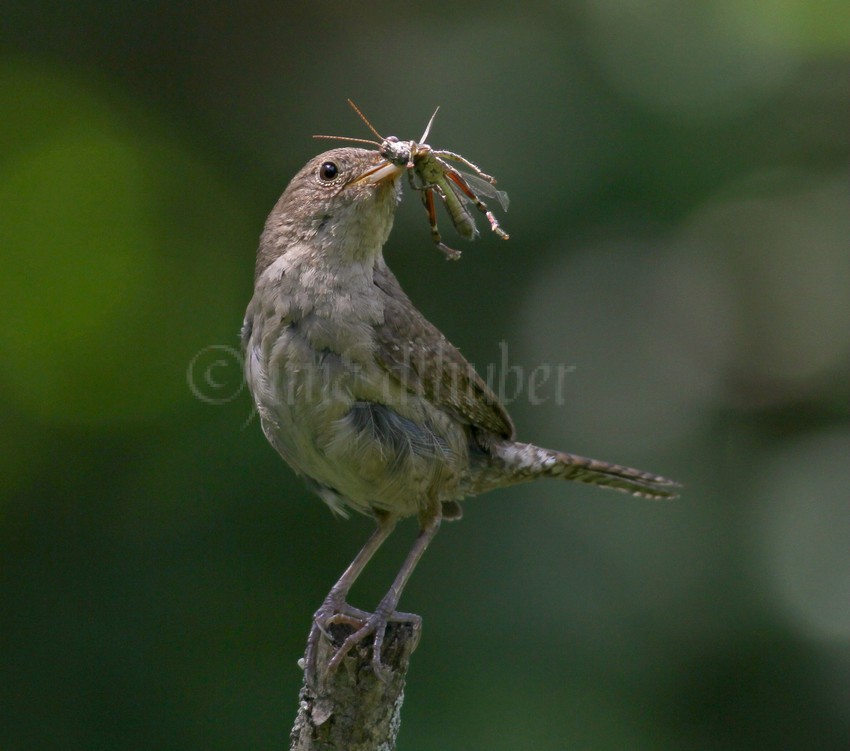
House Wren with a Grasshopper on its way to the nest.
House Wren
Binomial name: Troglodytes aedon
Category: Wrens
Size: 4.75” long, 6” wing span
Weight: 0.39 Oz.
Habitat: Open forests, woodland edges, farms, city parks, backyards and residential areas. In winter months they are a more secretive bird spending time in thickets, brushy areas, hedgerows and underbrush. Breeding area is most of the US except the south and southern parts of Canada too.
Diet: Typically they prefer insects, daddy longlegs, earwigs, caterpillars and some flying insects as well. They are known to also eat snail shells to help with digestion.
Nesting: House Wrens will use tree cavities, nest boxes, and sometimes odd places such as mailboxes or fence posts for nesting sites. They are known to use old nest cavities form other birds and despite their size chase out other nesting birds for a nest site. They bring small twigs into a nest hole or cavity. The nest cup is lightly lined with grasses, string, hair, plant material and feathers. The female incubates 3-10 eggs for 12-19 days, sometimes 2 broods. The male brings food to the female, they both feed the young. Partners split up after raising the young and find new partners the next year.
Cool fact: Twigs are used for either foundation for the nest cup or used to pile in front of the nest hole opening for predators, cowbirds or weather protection.
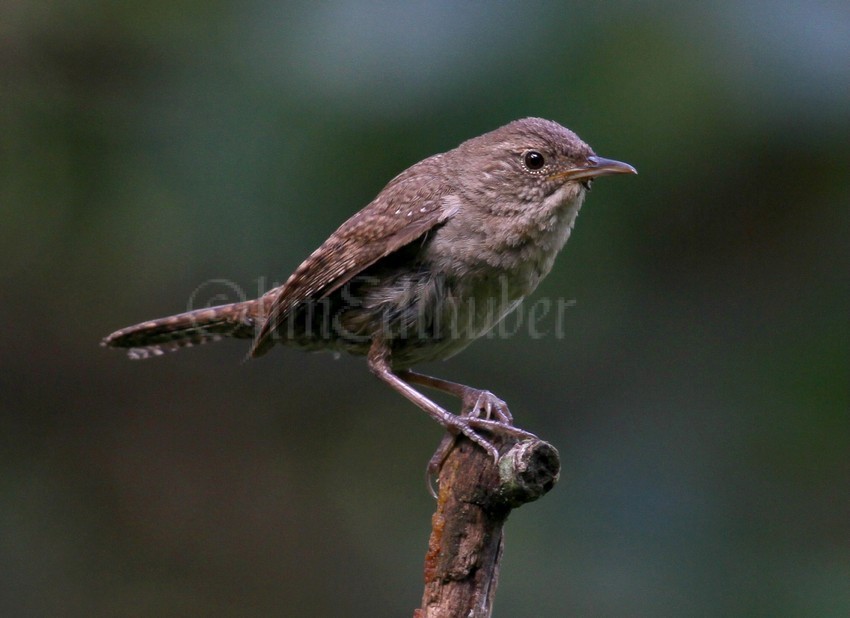
House Wren
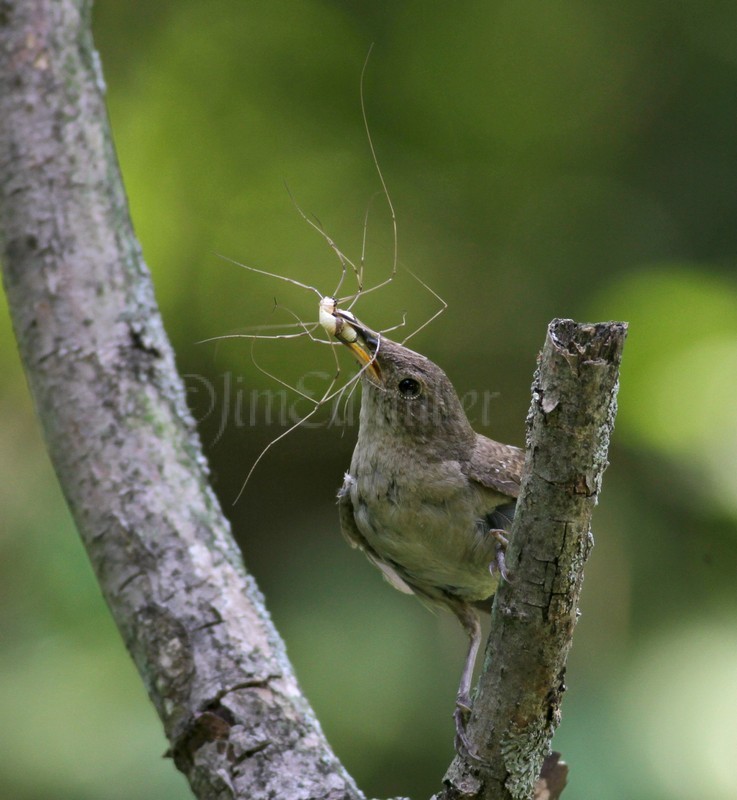
House Wren with a live Daddy Longlegs on its way to the nest. Interesting how when they have the Daddy Longlegs in their bills and alive that their heads are turning and moving as the Daddy Longlegs are fighting to get away!
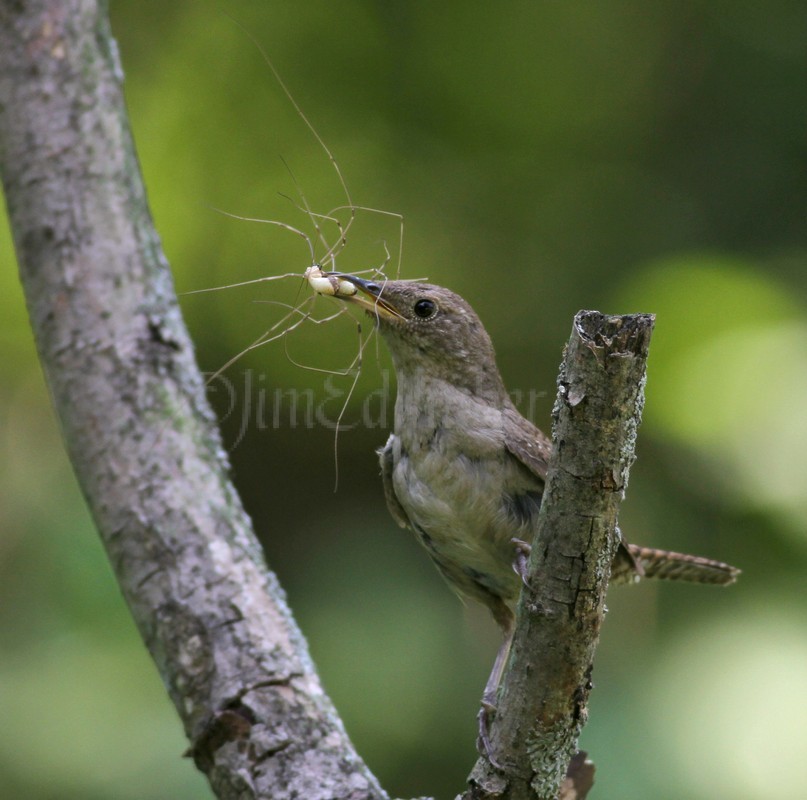
House Wren with a live Daddy Longlegs on its way to the nest.
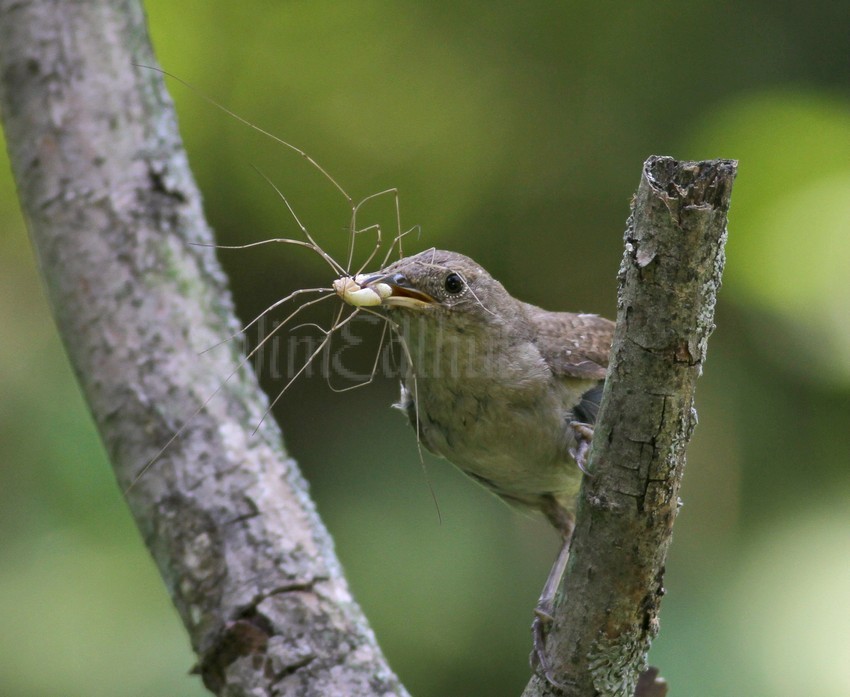
House Wren with a live Daddy Longlegs on its way to the nest.
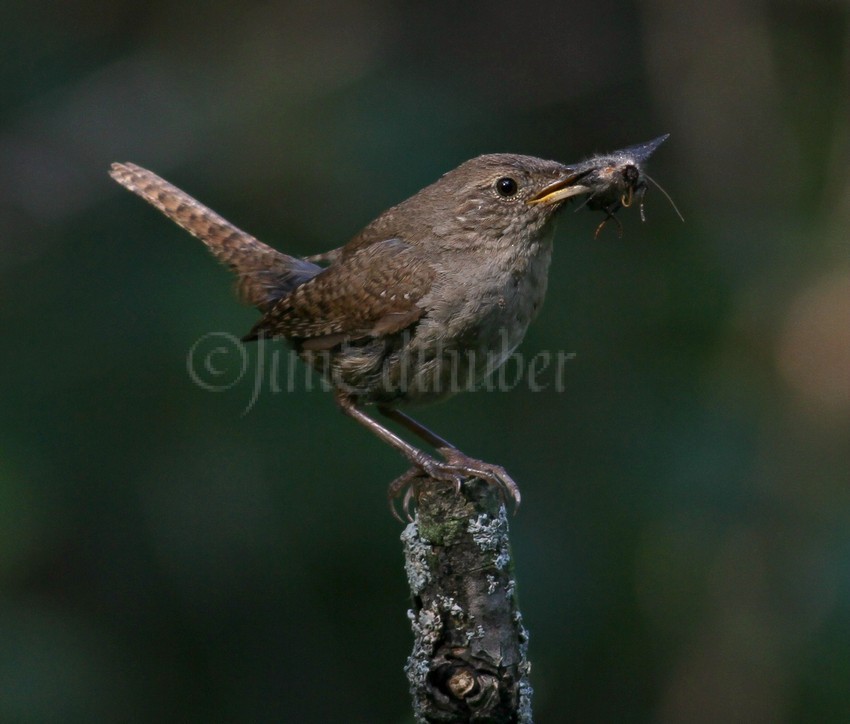
House Wren with an insect on its way to the nest.
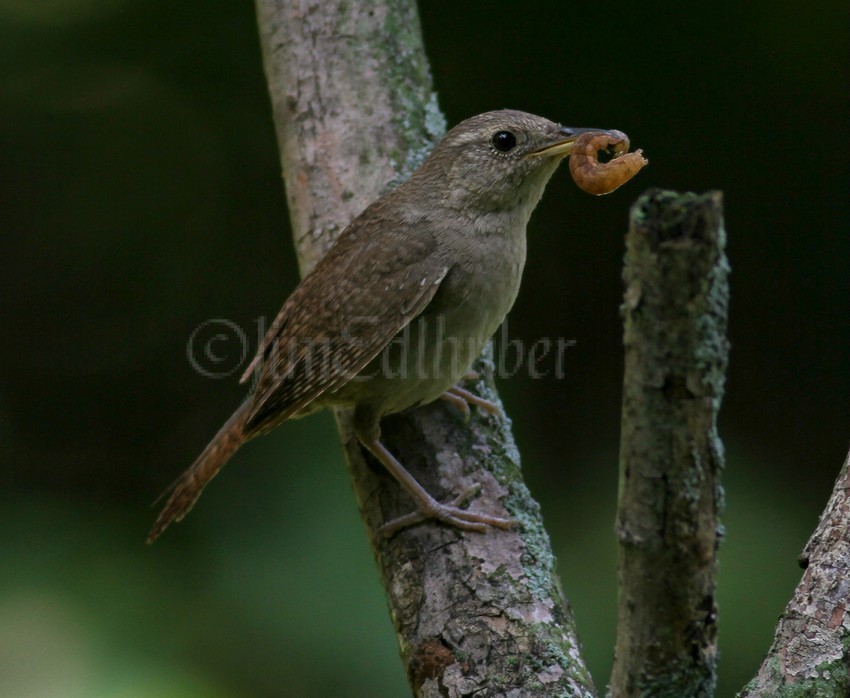
House Wren with a live caterpillar on its way to the nest.
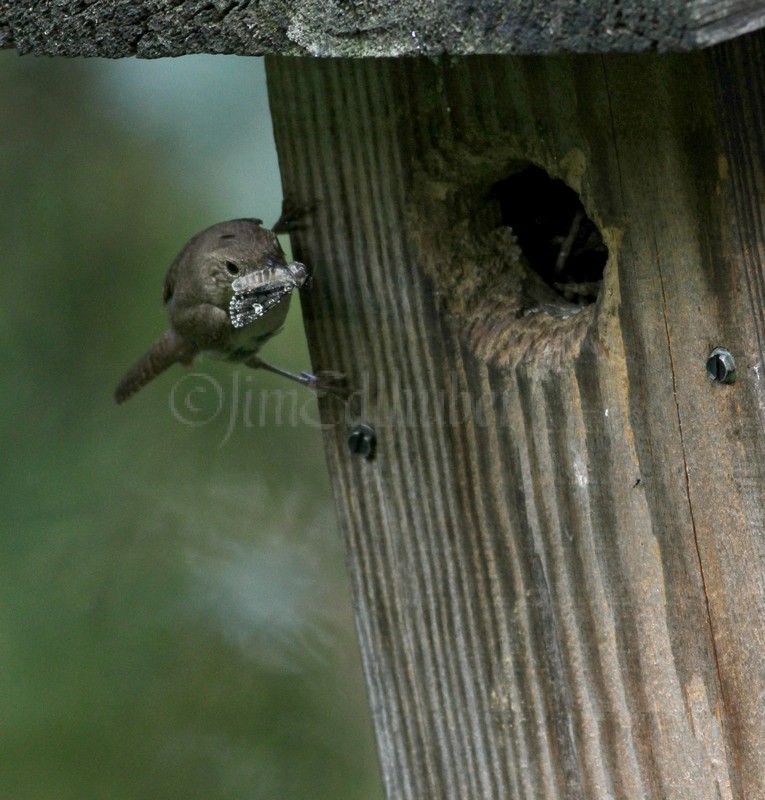
House Wren on its way to the nest with a moth.
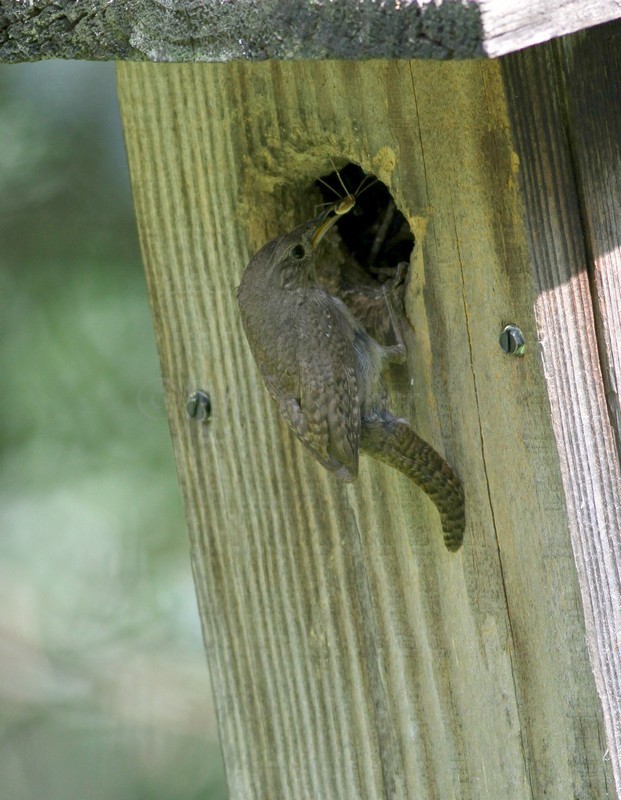
House Wren with a live Daddy Longlegs.
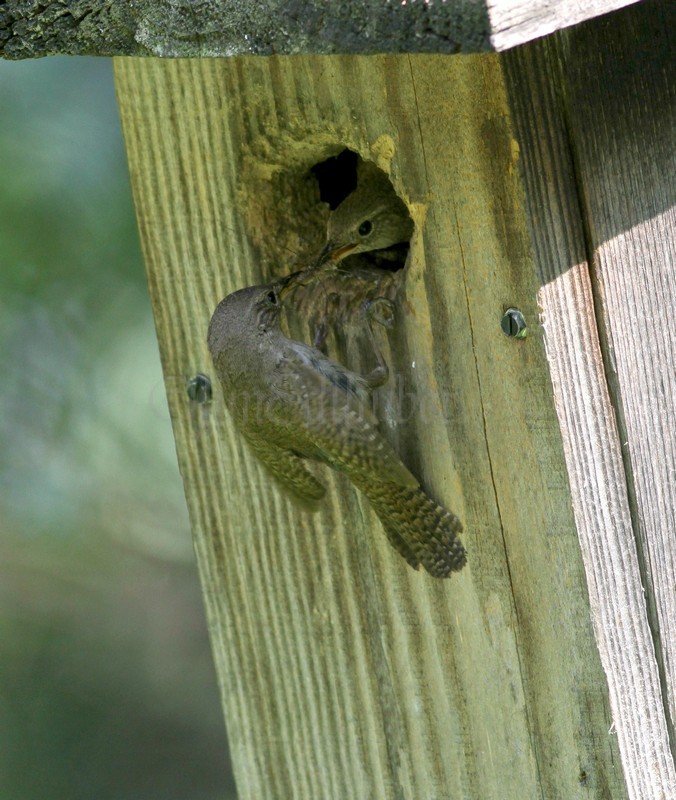
House Wren passing on a live Daddy Longlegs.
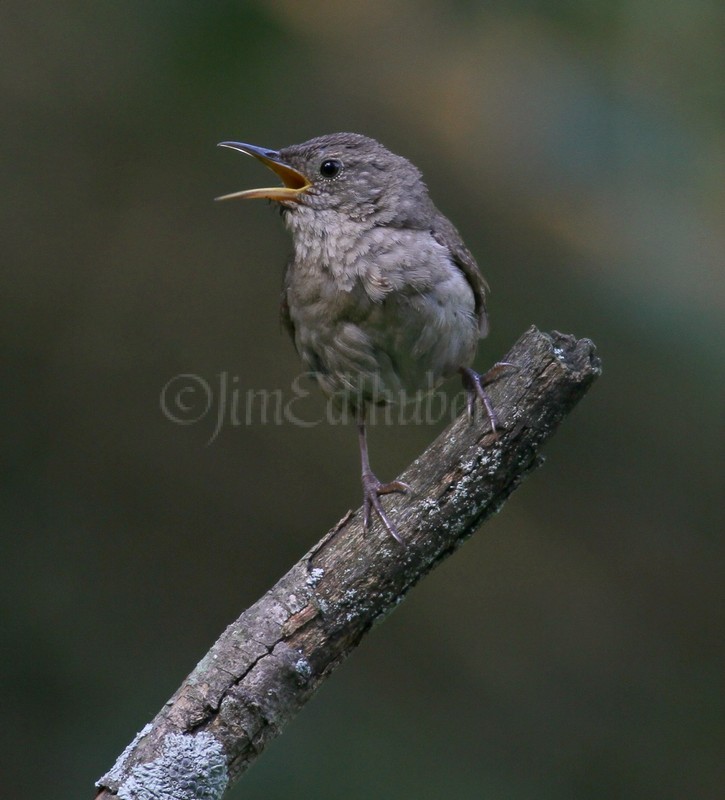
House Wren
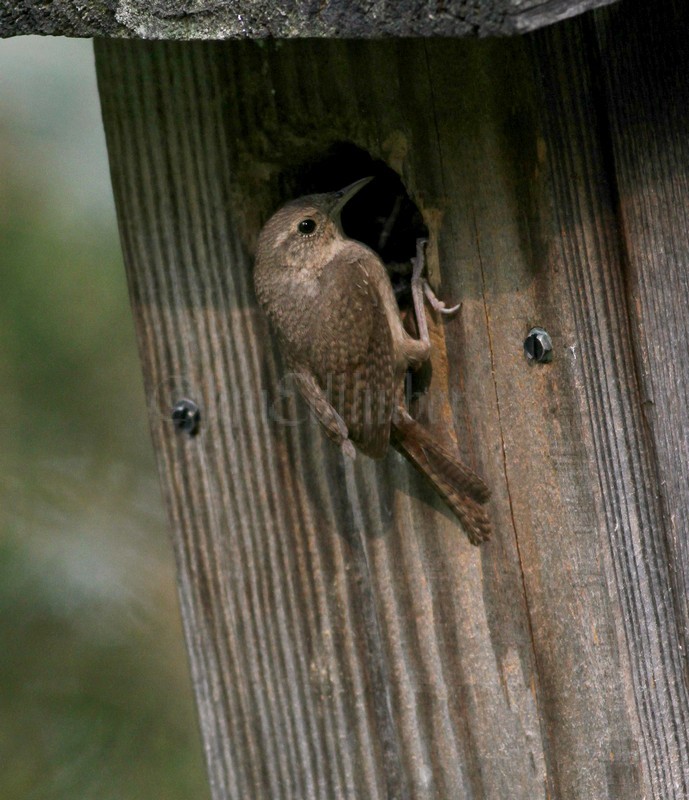
House Wren at the nest.
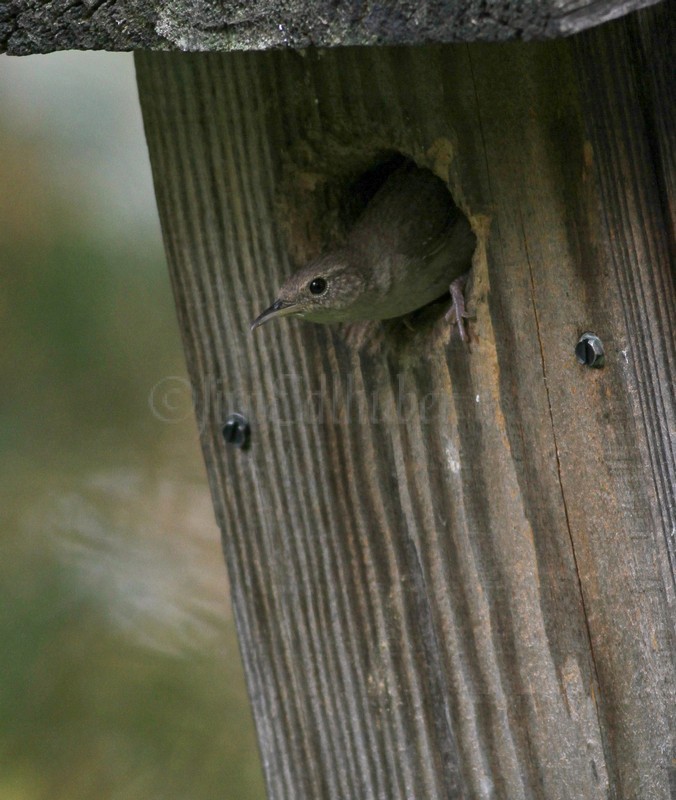
House Wren exiting the house after feeding young.
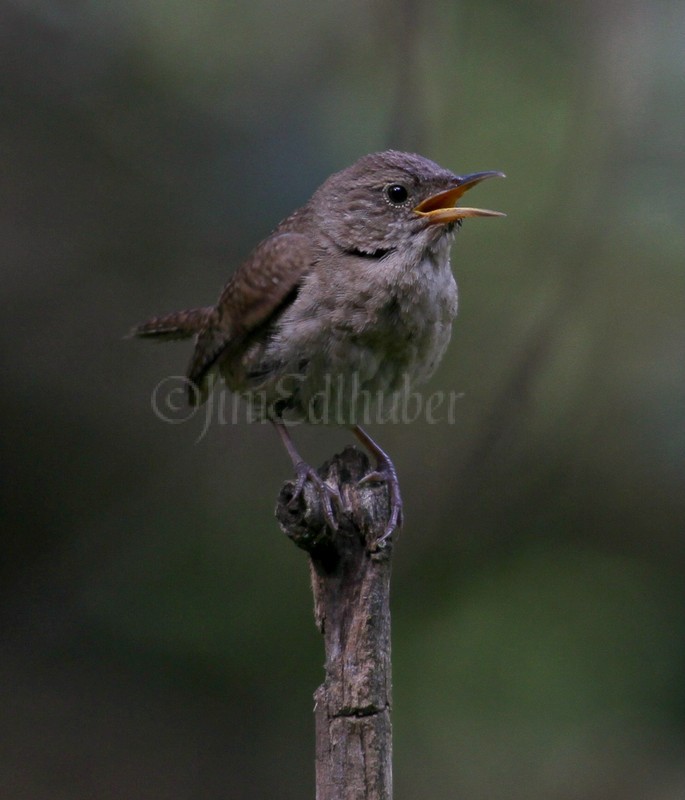
House Wren
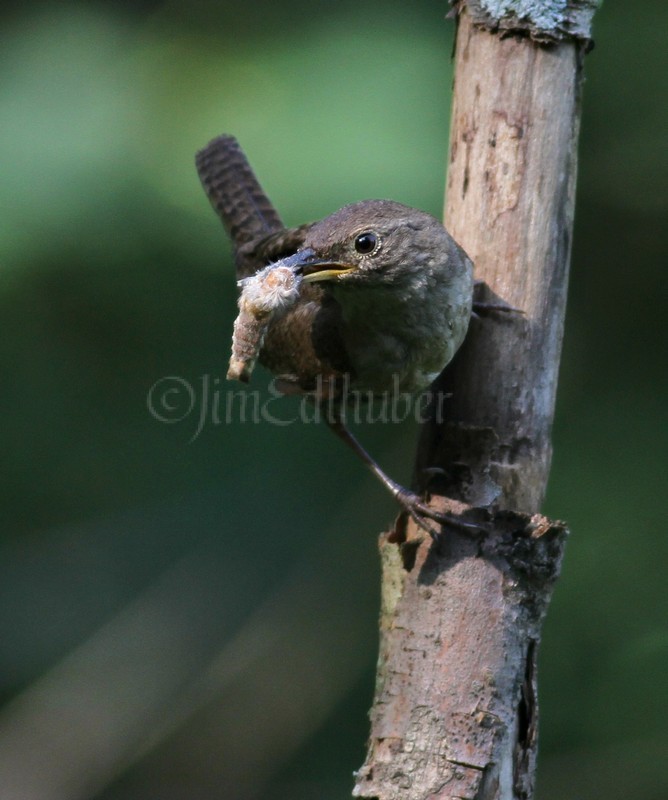
House Wren with a caterpillar on its way to the nest.
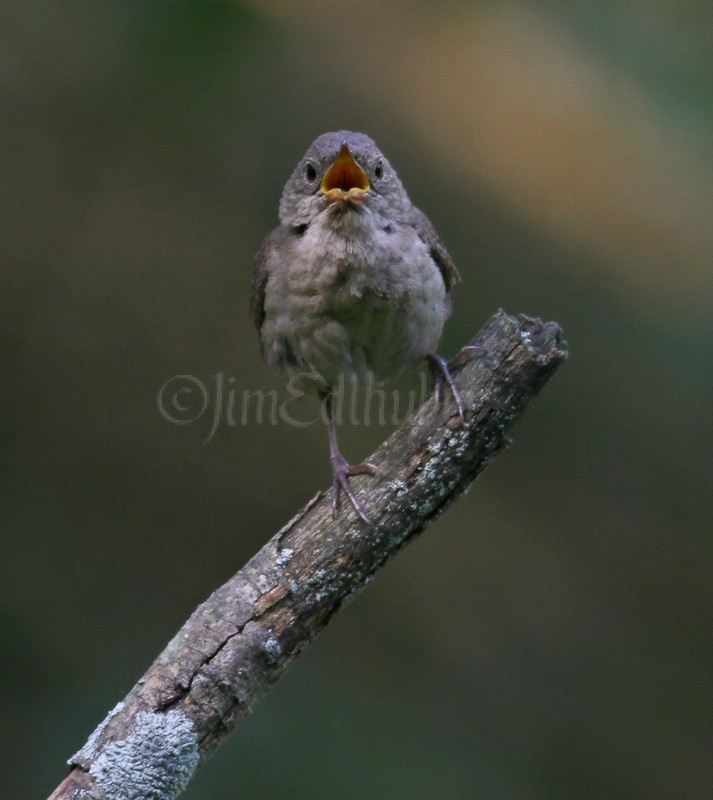
House Wren
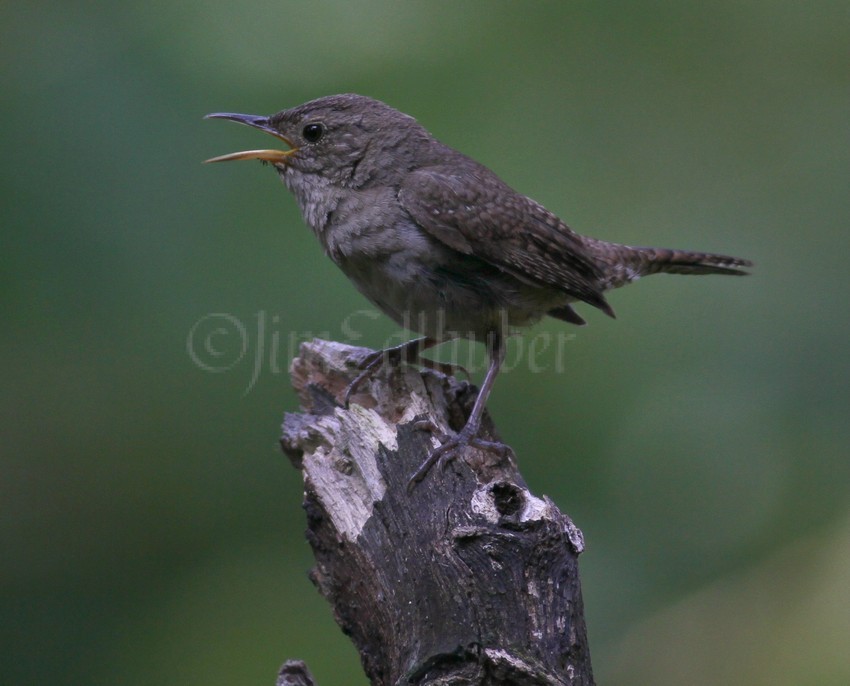
House Wren
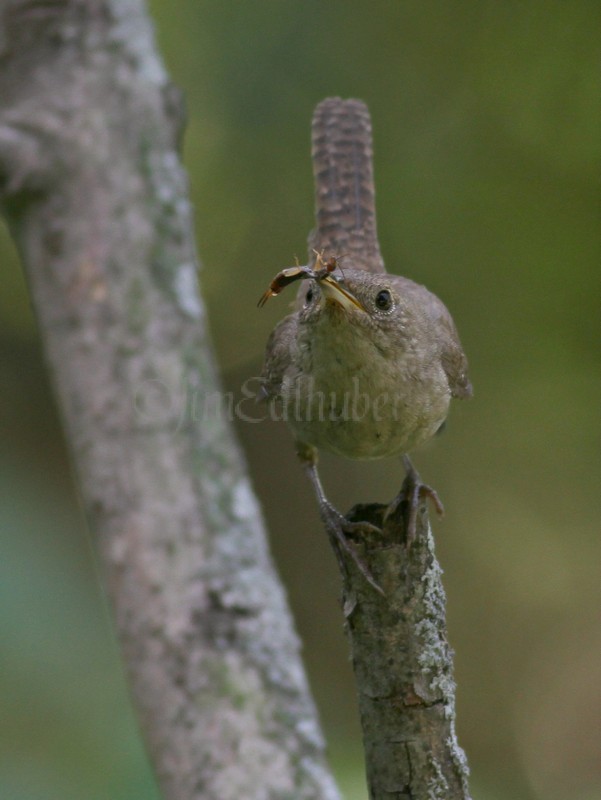
House Wren with a Earwig on its way to the nest.
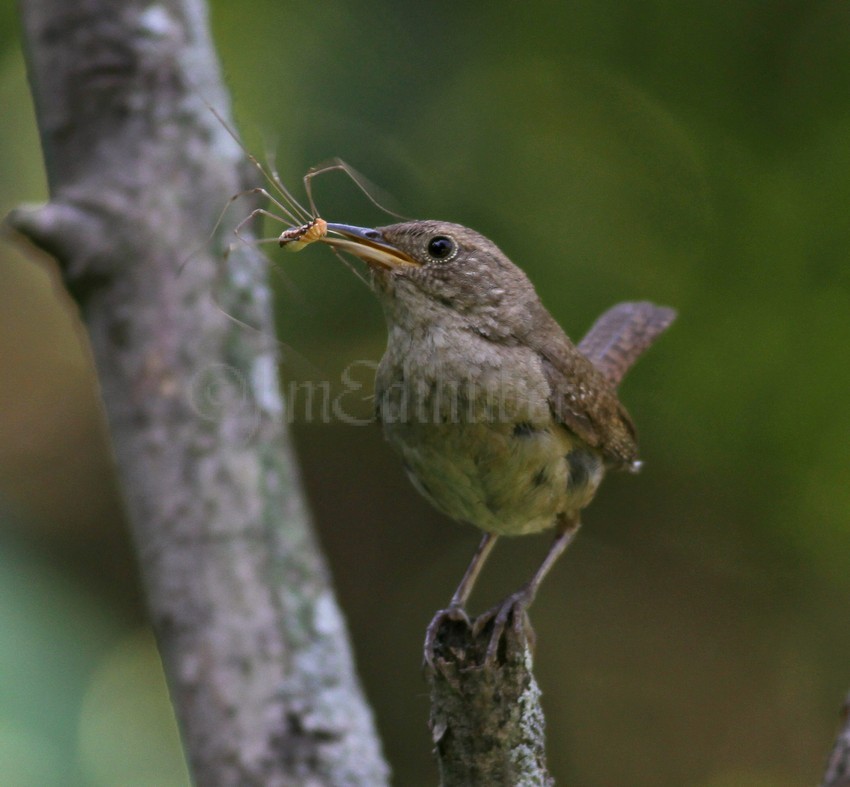
House Wren with a live Daddy Longlegs on its way to the nest. Interesting how when they have the Daddy Longlegs in their bills and alive that their heads are turning and moving as the Daddy Longlegs are fighting to get away!
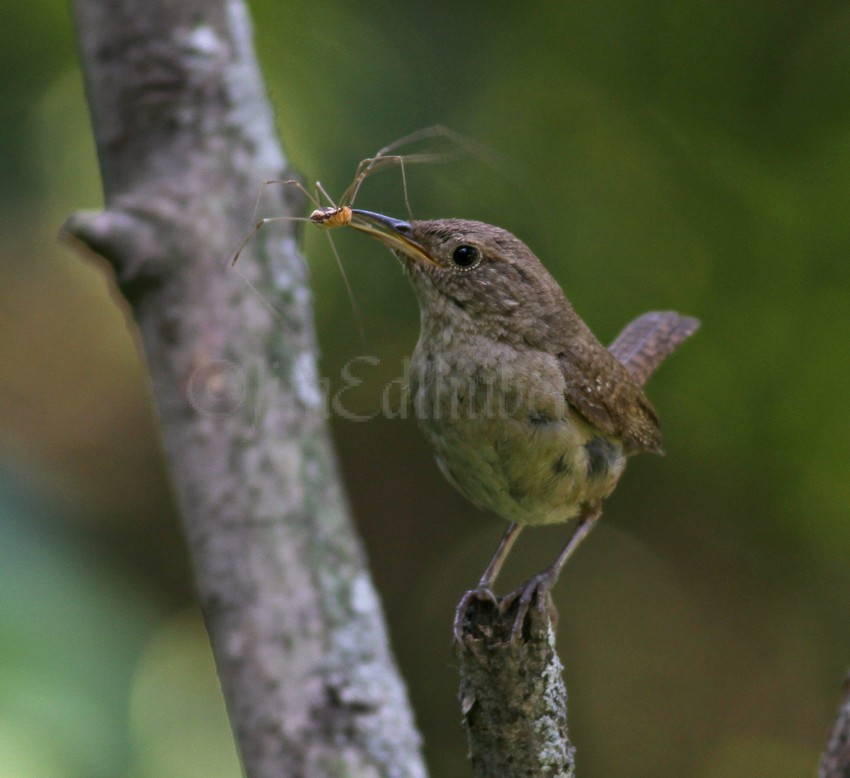
House Wren with a live Daddy Longlegs on its way to the nest.
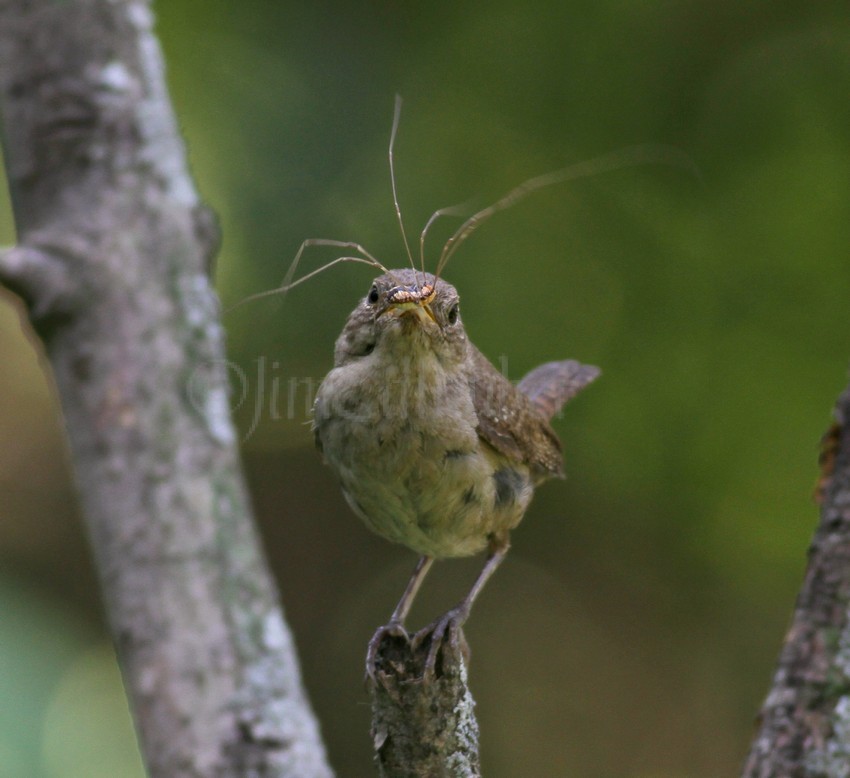
House Wren with a live Daddy Longlegs on its way to the nest.
